
FALL 2022 ™






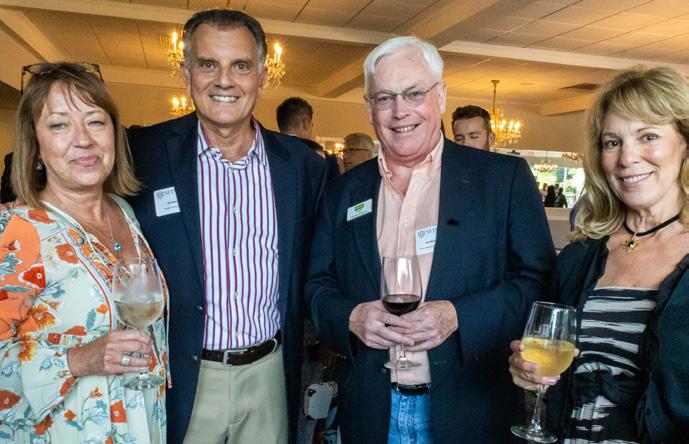

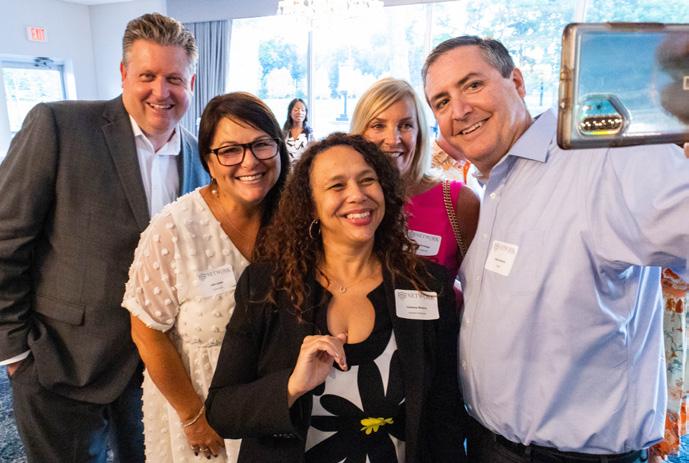
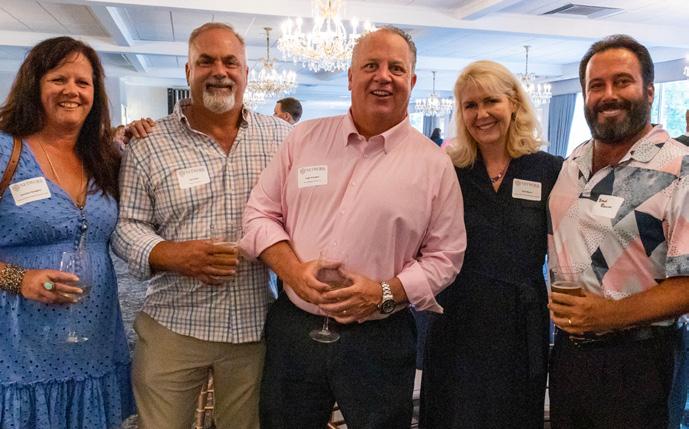
CONNECTING LEADERS | CREATING BUSINESS NETWORK MAGAZINE™ is direct mailed to Lehigh Valley’s professional services industries as highlighted below along with manufacturing companies and attorney’s representing Lehigh County and beyond. • Accounting • Construction • Consulting • Engineering • Financial • Human Resources • Legal • Marketing • Medical • Real Estate • Technology Print Readership Per Issue 8,000 Advertise@MyNetworkMag.com MyNetworkMag.com Join the Lehigh Valley’s first ever, high end, business leader driven, B2B magazine. NETWORK MAGAZINE™ Summer 2022 Release Party at The Club at Twin Lakes PHOTOS BY KATE LYNN OF K8 PICS


• adindex contents 29 Alcom Printing 13 Anthony Limousine 21 ASAP Business Support Services, Inc. 07 BMI Mergers & Acquisitions 27 Bridgeman Strategic Concepts 19 Buckno Lisicky & Company 11 Crosson Richetti & Daigle 25 enTrust Merchant Services 05 FITZPATRICK LENTZ & BUBBA 45 GBB & Co LLP 15 Greater Lehigh Valley Realtors 09 Gross McGinley LLP 39 Historic Bethlehem Museums & Sites 29 Huber, Waldron & Williams 35 Lehigh Valley Reilly Children's Hospital 45 Melody Cruz 11 MC IT 09 Morganelli Properites 31 Norris McLaughlin Attorneys at Law 47 Olde Homestead Golf Club 00 Pentele Data 33 Punch Garage 45 Rich Mar Florist 03 St . Luke's OMS 37 The Barristers Club 49 The Club at Twin Lakes 51 The Hindle, LLC 23 The Seltzer Group 17 Univest Corporation 53 & Inside Back Cover Vault 634 06 F Reorg to the Rescue: Sale of S Corporation 08 Should Your Hiring Process Include A Probationary Period? 10 Immigration: Addressing America’s Labor Shortages 12 Sleep Can’t Be That Important,Or Is It? 14 FSBOs Usually Soar in a Hot Market. Not This Time. 16 Recession? A Disconnect Between Data and Behavior 18 Outsourcing Accounting & Financial Needs for Small Businesses 20 Are You the Finance Department, Lawyer, Realtor, and Boss, too? 22 Proactive Approach to Cyber Security Seltzer Group Partners 24 Healthcare Payments Optimization 26 What is AEP? And is it important to me? 28 Why Do You Do It, Part 2 30 Lehigh Valley Employers Must Think Outside the Recruitment Box and Access the Global Workforce 32 A Golden Year for LANTA 34 Celebrating 10 Years at Lehigh Valley Reilly Children’s Hospital 36 Connecting Gens: Communicating and Engaging With The Multi-Generational Workforce 38 Rethinking Recruiting Post-COVID 40 Social Engineering and Cybersecurity - A CIA Station Chief Perspective 44 Using the past to teach the future. 46 What is Temperature Mapping? 48 The Perfect Meeting Place 50 Cigars 52 Jaindl: A Family History of Entrepreneurship
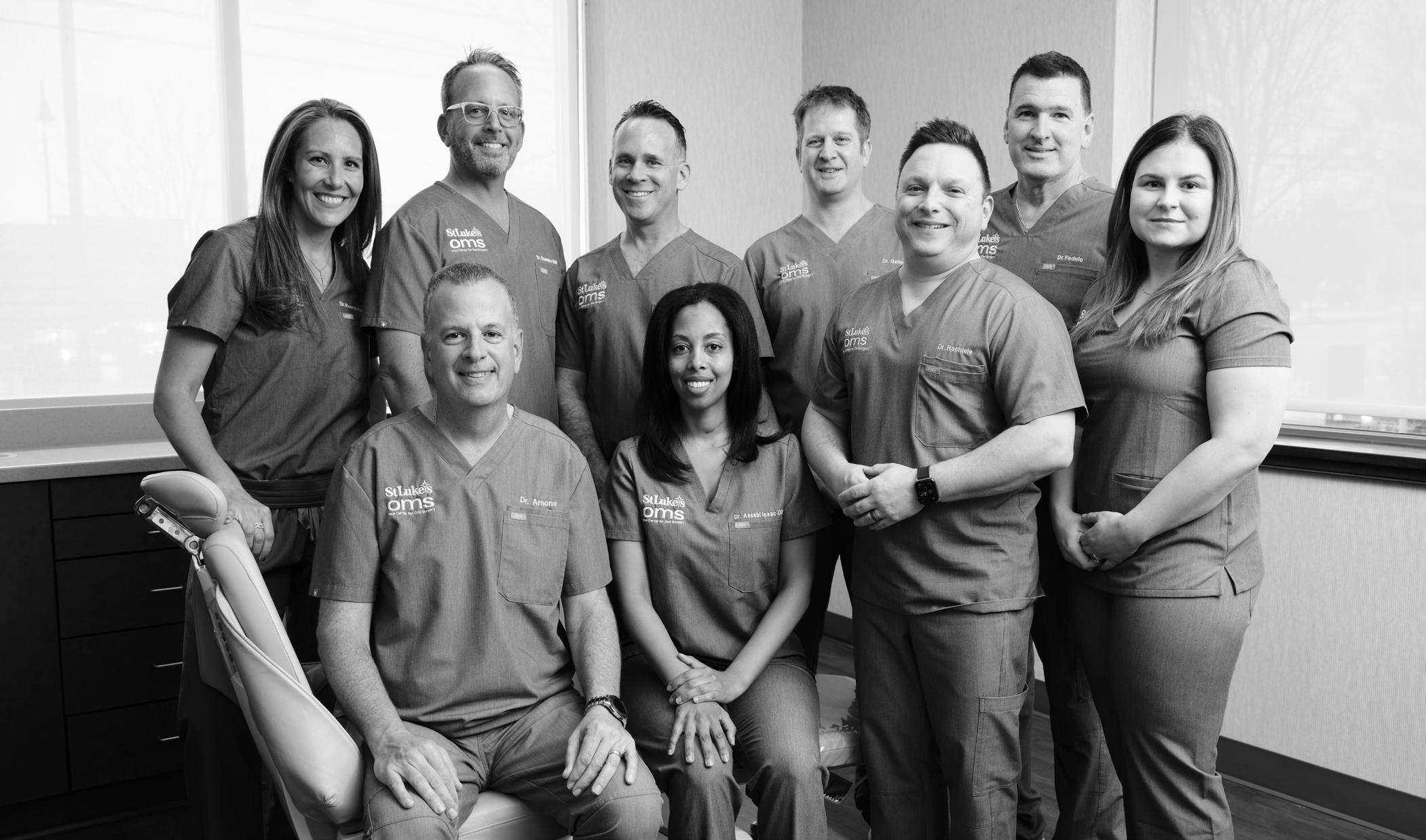
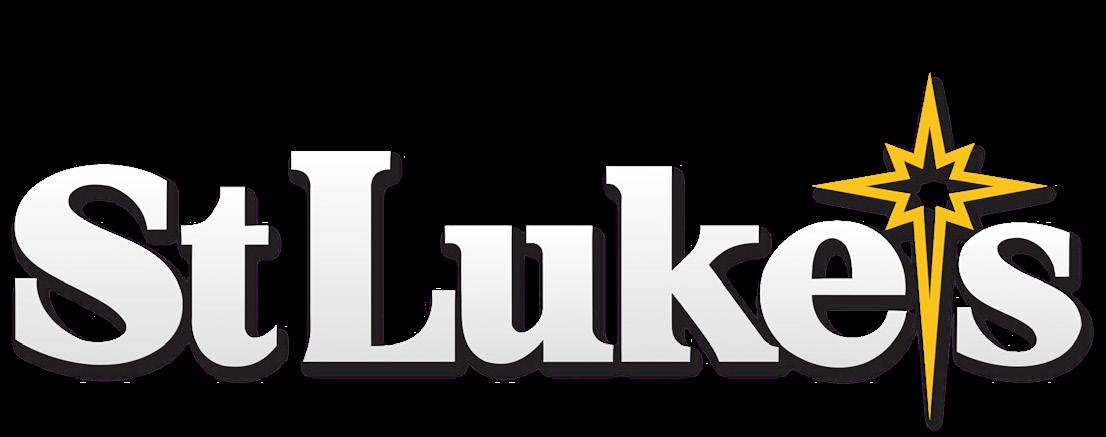

Your Center for Oral Surgery & Dental Implants 610•865•8077 Stlukesoms.com ALLENTOWN • BETHLEHEM • EASTON • STROUDSBURG
The partners of NETWORK MAGAZINE™ proudly present the latest edition of the Lehigh Valley's first ever, high end, business leader driven B2B magazine. Our goal is to continu ally present our readers relevant content to build your organi zation, from the region's top business leaders and experts on today’s industry news and trends.
Our leading contributors will continue to change quar terly, sharing information that stays fresh and current. The opinions, tips, and insights on how to best navigate business pitfalls are all provided by the Lehigh Valley's best thought leaders. Our writers are un-censored giving you profound insight from their years of experience from their given field of expertise.
To learn more about how you can become a part of NETWORK MAGAZINE™ as a Contributor or an Advertiser, please contact Ray Bridgeman: ray@mynetworkmag.com
rights
part or in full is strictly
a


The
in
for
and
of
as to the
™ All Materials © 2022 Network Magazine, LLC. NETWORK MAGAZINE™ is a trademark of Network Magazine, LLC. All
reserved. Reproduction in
prohibited. NETWORK MAGAZINE™ is
quarterly publication.
views
opinions expressed
this publication are those of the authors and do not necessarily reflect the official policy or position of NETWORK MAGAZINE™. NETWORK MAGAZINE™ assumes no responsibility
content
advertisement. No representation is made
accuracy hereof and is printed subject to errors and omissions. PUBLISHERS Ray Bridgeman, Alai Caetano, Casey Damrose, Chris Morganelli, David Olson ART DIRECTOR Casey Damrose EDITORIAL DIRECTOR Ray Bridgeman BUSINESS EDITOR David Olson EDITORIAL ASSOCIATE Jenn Ebert COVER PHOTO Frank Smith EVENT PHOTOS Kate Lynn of K8 Pics For advertising inquiry and rates please con tact Ray Bridgeman 610.573.7585 or email ray@MyNetworkMag.com Join our Network 4 NETWORK MAGAZINE™ MyNetworkMag.com
DOMAIN • EMPLOYMENT LAW • ESTATE PLANNING • FAMILY LAW • FOOD & BEVERAGE HEALTHCARE • INTELLECTUAL PROPERTY • INTERNATIONAL BUSINESS & TRADE LAW • LANDLORD/TENANT LAW • LITIGATION & TRIAL PRACTICE • MERGERS ACQUISITIONS • NONPROFIT ORGANIZATIONS • PERSONAL INJURY • PLANNED COMMUNITIES & CONDOMINIUMS • PROJECT DEVELOPMENT & FINANCE • PROPERTY TAX EXEMPTIONS • REAL ESTATE, LAND USE & DEVELOPMENT • RESTAURANTS HOSPITALITY • TAX ASSESSMENT APPEALS • TAXATION • BANKRUPTCY & CREDITOR’S RIGHTS • CORPORATE, BUSINESS & BANKING • EMINENT DOMAIN • EMPLOYMENT LAW • ESTATE PLANNING • FAMILY LAW • FOOD & BEVERAGE HEALTHCARE INTELLECTUAL PROPERTY • INTERNATIONAL BUSINESS & TRADE LAW LANDLORD/TENANT LAW • LITIGATION & TRIAL PRACTICE • MERGERS ACQUISITIONS • NONPROFIT ORGANIZATIONS • PERSONAL INJURY • PLANNED COMMUNITIES & CONDOMINIUMS • PROJECT DEVELOPMENT & FINANCE • PROPERTY TAX EXEMPTIONS • REAL ESTATE, LAND USE & DEVELOPMENT • RESTAURANTS HOSPITALITY • TAX ASSESSMENT APPEALS • TAXATION • BANKRUPTCY & CREDITOR’S RIGHTS • CORPORATE, BUSINESS BANKRUPTCY & CREDITOR’S RIGHTS • CORPORATE, BUSINESS & BANKING EMINENT DOMAIN • PROPERTY TAX EXEMPTIONS • REAL ESTATE, LAND USE DEVELOPMENT • RESTAURANTS & HOSPITALITY • TAX ASSESSMENT APPEALS MERGERS & ACQUISITIONS • FOOD & BEVERAGE • PLANNED COMMUNITIES CONDOMINIUMS • TAXATION • INTERNATIONAL BUSINESS & TRADE LAW ACQUISITIONS • NONPROFIT ORGANIZATIONS • PERSONAL INJURY • CORPORATE, BUSINESS & BANKING • EMINENT DOMAIN • EMPLOYMENT LAW • ESTATE PLANNING FAMILY LAW • FOOD & BEVERAGE • HEALTHCARE • INTELLECTUAL PROPERTY • ORATE, BUSINESS & BANKING • MERGERS & ACQUISITIONS • EMINENT DOMAIN RESTAURANTS & HOSPITALITY • TAX ASSESSMENT APPEALS • MERGERS NATIONAL EXPERIENCE. LOCAL VALUES. We have the solutions for your legal challenges. TWO CITY CENTER 645 West Hamilton Street, Suite 800, Allentown, PA 18101 www.flblaw.com • (610) 797-9000
F Reorg to the Rescue: Sale of S Corporation
RICHARD A. KEEFE, ESQUIRE – FITZPATRICK LENTZ & BUBBA, P.C. (NOT ADMITTED IN PENNSYLVANIA); LOUIS LEMASTER, CPA, BUCKNO LISICKY & COMPANY
Many businesses we represent are organized as Sub S corporations for tax advantages. However, we have found that a sale of the business can create challenges, which can be overcome by utiliz-ing a tax-free Code Section 368(a)(1)(F) reorganization (which is defined as a mere change in identity, form, or place of an organization) to convert the entity housing the business to a single member LLC ("SMLLC").

Buyers acquiring an S Corporation encounter issues. Certain attributes – contracts, licenses, and EIN, for example - are best preserved by the acquisition of the stock of the S Corporation ("Tar-get"). However, this does not result in a step-up in the basis of assets to purchase price, costing the Buyer increased depreciation and reducing a Target's value. A solution would be having a C Corp Buyer and S Corp Seller make an Internal Revenue Code Section 338(h)(10) election with respect to the acquisition.
Pursuant to this election, the acquisition of Target stock is deemed to be, for tax purposes, an ac-quisition of its assets. The Buyer gets a step-up in basis and a preservation of attributes. Howev-er, there are constraints— acquisition of at least 80% of the stock of Target, and Target must be a valid S
Corporation. Pass-thru on any retained equity is eliminated. Moreover, legal assurances are required by the Buyer (such as Target is a valid S Corporation), backed by indemnities, which could be daunting. In other deals, Buyers require Sellers to keep substantial rollover equity, per-haps up to 25% of the entity. Targets can be required to liquidate, triggering gain to Seller on all assets, including any interests retained. Real-world terms often make 338(h)(10) impractical.
An F Reorg is an IRS-approved workaround. If you receive an offer to buy your S corporation and are asked to retain some equity, you should become familiar with the benefits of using this technique to convert the Target into an SMLLC, which is subsequently bought by the Buyer. The Buyer is protected from any historical defect in the Target S Corporation status.
The Buyer can acquire less than 80% of Target—it would get a step-up on whatever portion it did buy. The Sell-er would be deemed to have sold (and would pay tax on) only that portion of the SMLLC that was acquired by the Buyer and would have a carryover basis in whatever is retained.
The parties should choreograph steps to achieve this result.
6 NETWORK MAGAZINE™ MyNetworkMag.com
First: Shareholders of Target create a new Holding Company, which makes an S election, and contribute the shares of Target to the Holding Company.
Second: Holding Company makes a Q Sub election for Target. (A Q Sub is wholly owned by an S Corp parent and considered a disregarded entity for tax purposes, meaning it has no tax exist-ence.)
Third: Holding Company creates a new Single Member LLC. (“SMLLC”). This will also be a disregarded entity for tax purposes, as it is 100% owned.
Fourth: Holding Company will merge the Q Sub and the SMLLC, with SMLLC the surviving entity.

The merger of the disregarded entities Q Sub and SMLLC is not a taxable event. (Think of it as the merger of one thing that doesn’t exist into another thing that doesn’t exist—tax law at its finest). Depending upon applicable State law, the Q Sub might be able to elect to directly convert to an SMLLC, avoiding the “merger” step, but with the same end result.
[Note: this merger, or conversion, should take place at least one day after the Q Sub election is actually made to satisfy IRS requirements for a valid Q Sub election.]
Fifth: Buyer acquires interests in SMLLC.

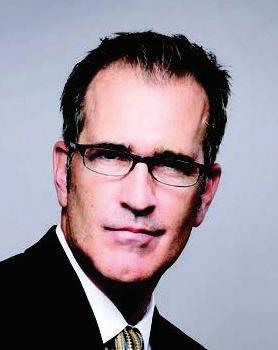
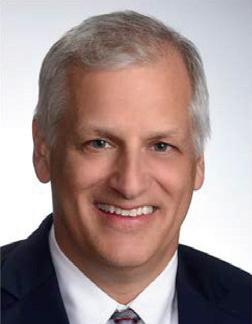

The problems above are circumvented. Buyer is not dependent upon Seller's Sub S history. It ac-quires a clean interest in a new vehicle that is either disregarded or taxed as a partnership. [An SMLLC with more than one owner will immediately convert to an entity taxed as a partnership.] The Seller can continue to own an interest in the surviving entity. Because Buyer has acquired either deemed assets, or an interest in a partnership making a Section 754 election, there is a step-up of basis to the Buyer. No Section 338(h)(10) involved. Similarly, Seller only recognizes gain on the portion of Target sold. Target is now a partnership, so unlike a Sub S, all the ownership interests do not have to be equivalent, creating opportunities to structure different classes.
As demonstrated above, with some modest planning, the parties can negotiate terms with more flexibility. We would urge you to contact your accountants and lawyers early in the process so as to afford the maximum maneuverability for your transaction.
Thinking about Selling Your Business? Do you Know the Value of your Business? Contact Us for a COMPLIMENTARY Business Valuation! M&A Advisors | Investment Bankers | Business Brokers Certified - Confidential - References Securities transacted thru StillPoint Capital LLC, Member FINRA and SIPC Offices in Lehigh Valley, Philadelphia, Chicago and New York Since 2007 BMI Provides Proven Results. Contact David Olson (m) 610-504-4880 BMImergers.com
Dave Clark Tom Kerchner David Olson
Mergers & Acquisitions
Should Your Hiring Process Include A Probationary Period?
THOMAS E. REILLY, JR., ESQUIRE, BUSINESS SERVICES CHAIR GROSS MCGINLEY, LLP
Hiring new employees has always been a time-consuming, expensive process, as much an art as a science, as employers search for someone who is both skilled at what they do and also aligns with the company culture and values. One of the hangovers from the pandemic and the Great Resignation is that most employers desperately need employees right now and may be spending more time on hiring in recent years than they have in the past.
Now may be the perfect time to reevaluate your hiring and onboarding processes, including whether or not you should include a probationary period. At first glance, a probationary period appears to be a win-win; a period of time at the beginning of the employment relationship where both employer and employee can evaluate whether the new hire and the new job are a good fit. But first looks can be deceptive.

Probationary periods have their origins in union shops where employers subject to a collective bargaining agreement could terminate a new employee without the need to comply with restrictions on termination imposed by the union contract once those employees are eligible to join the union. Over time, non-union employers also embraced the concept as a way to evaluate a new employee under differing standards than those typically part of the employment relationship, and in doing so, inadvertently created a disconnect with the law in most states.
Employers lost sight of the concept of “employment at will”; the law in every state but Montana that either the employee or the employer may end the employment relationship at any time, for any or no reason - subject to state and federal laws that prohibit discrimination or retaliation. In short, an employer’s and employee’s respective rights during a probationary period are no different than the rights that exist after the probationary period is concluded. Every employee, whether employed for days or decades, is subject to the same conditions of continued employment and standards of conduct, making a probationary period unnecessary.
In addition, the existence of a probationary period, especially if the policy is poorly drafted and/or enforced, becomes a perfect example of the law of unintended consequences.
Sometimes employers wrongfully believe that the existence of a probationary period prevents a wrongful termination lawsuit if the employee is terminated at any time after the end of the probationary period; it does not. Conversely, employees sometimes believe that once the probationary period is successfully completed, they cannot be terminated other than for sufficient cause; and some courts agree. There are rulings which provide that successful completion of a probationary period implies obligations to the employee that make it more difficult for an employer to terminate under the “at will” standard, instead requiring that termination must be for cause. So, are probationary periods always a bad idea? Not necessarily, as long as the policy and purpose behind the probationary period are well reasoned, planned, implemented, and most importantly, consistently enforced.
The purpose of the probationary period should be made clear in both the onboarding materials and the employee handbook. During a probationary period, management should meet with and provide both positive and negative feedback to the new employee. In the case of negative feedback, provide well-defined suggestions for improvement. There also needs to be a commitment by management to do this with every new employee, not just the employees that management perceives as “washouts.”
It should also be made clear, in writing, both at the start of, and especially at the conclusion of the probationary period, that employment at all times remains “at will,” and the successful completion of a probationary period does not guarantee continued employment, nor does it impact the employer’s right to terminate the employee at any time for any legal reason. Finally, this issue cannot be avoided by simply creating a euphemism for the term “probationary.” Using softer words like “introductory,” “welcome," or “orientation” does not change anything from a legal perspective. To paraphrase Shakespeare (uttered by Juliet, and not Dick the Butcher), “A rose by any other name still needs to be well reasoned, planned, implemented and consistently enforced.”
8 NETWORK MAGAZINE™ MyNetworkMag.com
DEDICATED PEOPLE



MINDS


INNOVATIVE
PROFESSIONAL SERVICE
Immigration: Addressing America’s Labor Shortages

Much discussion is made regarding the United States’ immigration policies. However, much of the attention tends to be on our Southern borders. Not so much in the spotlight but still vastly important is the field of business immigration. Balancing the need to bring talented workers into the United States with the need to support our own workers is the centerpiece of this field. In fact, a would-be employer must demonstrate to the satisfaction of the Department of Labor that no American worker can fill the job needed at the prevailing wage. This process is called Labor Certification and can take over a year in some instances from start to finish. The process also calls for a thirty-day intensive recruitment period, including advertising and job postings that contain specific language. Most business owners may smirk at this – these days, job postings may hang for months or more without adequate labor to meet the demand.
So how would an employer find talented labor suitable for the immediate needs of a field facing a shortage? Congress contemplated this with the creation of a National Interest Waiver system. For members of professions holding advanced degrees or their equivalents, a National Interest Waiver can help bypass the need for the arduous process of Labor Certification. As is the case with many laws passed by congress, some terms are vague and must be left up to judicial interpretation. National interest is one of those terms. However, in 2016, the U.S. Citizenship and Immigration Services (USCIS) set a standard for the term in an Administrative Appeals Office decision, Matter of Dhanasar. That decision laid the groundwork for modern National Interest Waiver adjudications by creating a three-pronged test.
First, the foreign national's proposed endeavor has both substantial merit and national importance. A range of meritorious endeavors, from technology to science, culture, or health-related fields, may be approved. Second, an adjudicator must find that the foreign national is well positioned to advance such a proposed endeavor. Here the merits of the individual are considered. And finally, on the balance, it would be beneficial to the United States to waive the labor certification or job offer requirements. This is a discretionary
finding relating to labor markets, job creation, or the desirability of the fields like STEM work.
The final prong also touches on an interesting and sometimes under-utilized provision within the law. That is the ability of a foreign worker with significant enough talent to petition themselves as an alien worker into the U.S. However, most employers already know they wish to offer a job, and the Department of Labor requirements are all they need waived – especially when they have already been searching for some time. From time to time, the Department of Labor recognizes this in specific fields. It predetermines that there are not sufficient U.S. workers to meet the demands.
One such designation is that of “Schedule A" occupations. For these occupations, the DOL will generally waive the onerous Labor Certification requirements without the need for much independent inquiry. This is particularly useful in the Lehigh Valley in the field of professional nurses. My wife works as a nurse; I can tell you that the Department correctly deduced the severity of the shortage. Professional nurses, typically Registered Nurses or those with higher or more specialized nursing training, may be petitioned by an employer without the labor certification process. Employers in particularly dire situations may also apply for Premium Processing to further expedite the procedure.
STEM fields are also seeing an increasingly friendly DOL and USCIS in 2022 through expanded STEM optional practical training, which allows those on student visas to remain longer in the United States to train in their intended field. Such an extension also allows employers to consider their talents for potential petitions for permanent employment. Fields such as data science, business analytics, and cloud computing all received extensions under the new guidance.
With the labor shortages facing most areas of the economy and the relatively friendly administration in the White House, now would be the ideal time for companies looking to bring on foreign workers to do so. Immigration is a quickly changing field and finding key skilled employees now may well position a company for success before these rules change again.
DAVID HARRINGTON, SENIOR ASSOCIATE AT CROSSON, RICHETTI, & DAIGLE LLC
10 NETWORK MAGAZINE™ MyNetworkMag.com






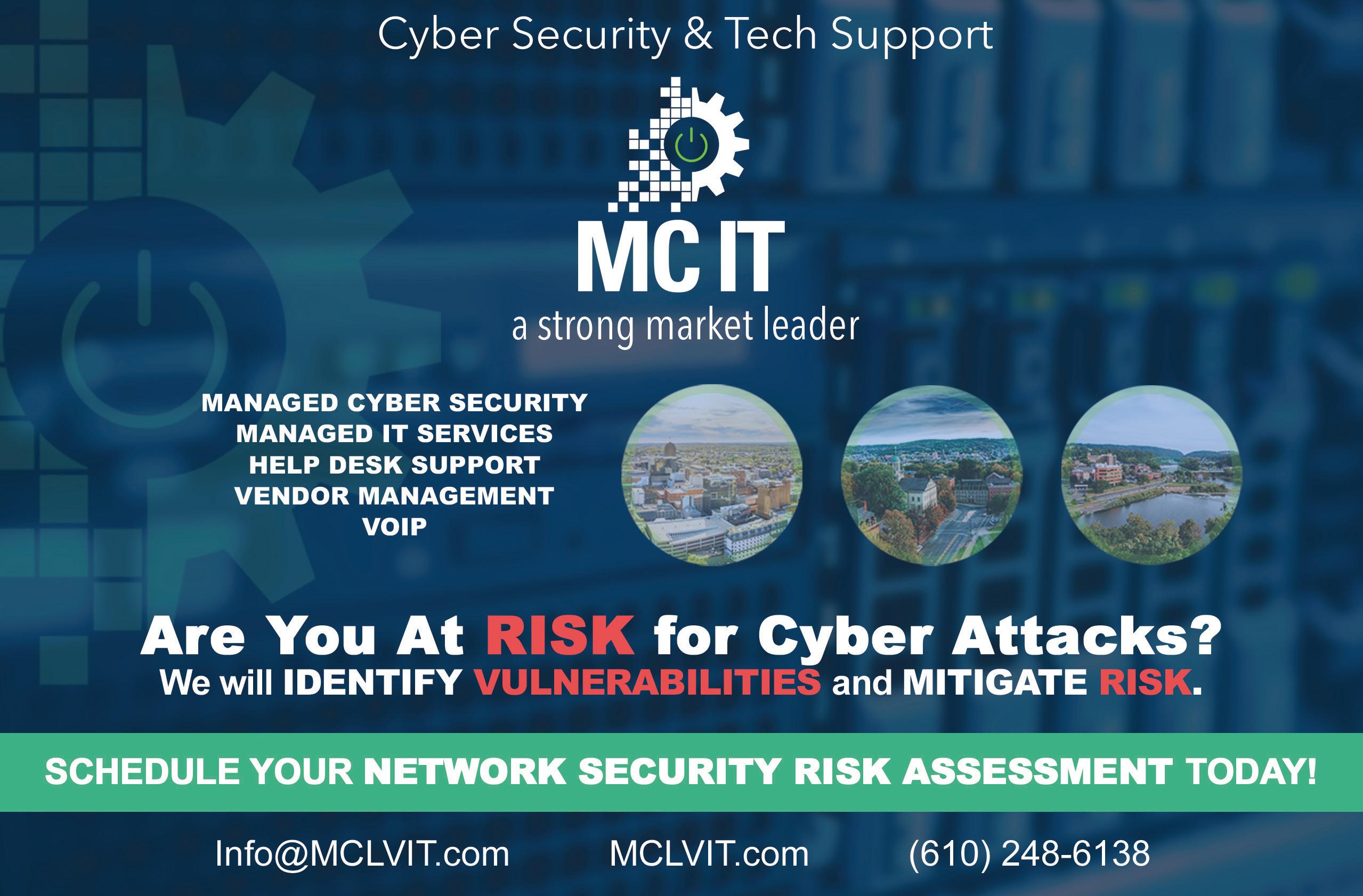
610.351.2264 609 W. HAMILTON ST., SUITE 210, ALLENTOWN, PA 18101 I HAD A WONDERFUL EXPERIENCE WORKING WITH THIS LAW FIRM. HEATHER M. CROSSONRICHETTI.COM 11NETWORK MAGAZINE™MyNetworkMag.com
Sleep Can’t Be That Important, Or Is It?
Each day contains just 24 hours for all of us to squeeze in any household tasks, work assignments, appointments, and a myriad of other activities, ensuring we get everything done. Oftentimes, this means sacrificing certain activities to fit everything into our day. More often than not, what gets sacrificed is one of the most important parts of our days and our lives: personal care. While personal care is composed of many facets, which include destressing activities, diet, exercise, and many more, the one facet that gets sacrificed more than any other of these components is consistent and quality sleep. This does not mean that the other parts of personal care are not important, as each component plays an integral part in our lives. Still, sleep is what drives our ability to accomplish all of the tasks, responsibilities, and personal care activities that our bodies and minds need.
To start, it is important to lay the groundwork for what is considered a healthy amount of sleep and what goes on within the body and mind while we are asleep. The first question to answer is, how much sleep does one person need? The answer for this depends on that person’s age, as different age groups will require different amounts of sleep to get the full restorative effects of a healthy sleep routine. Babies need the most sleep as they are still developing and growing rapidly at their young age, about 16 hours. As we age, the length of required sleep lessens, such as with teenagers needing 9 hours of rest and adults only needing 8 hours. During this time frame, the body will go through sleep cycles, about 4-5 per night, where the body will go through different phases of sleep, such as deep sleep, where everything is at its lowest functioning level, and Rapid Eye Movement (REM) sleep where dreaming occurs and heart rate, breathing, and blood pressure can rise and fall.
Now that we have a basic understanding of how much sleep is needed and what occurs with our body during sleep, let us explore the impact that sleep has on a person’s physical health. Since we live in a very fast-paced environment, it is

essential that our body and mind have downtime to recharge, repair, and prepare for the next onslaught of activities without having to process incoming stimuli. While we are asleep, the body is busy at work regulating and producing hormones that assist in things like growth and development, insulin management, and digestive health. Additionally, giving the systems in your body time to rest, like the cardiovascular system, allows for a needed break for vital organs and decreases a person’s overall heart rate and blood pressure for each day.
Finally, after gaining an understanding of sleep’s impact on someone’s physical health, it is also important to understand the vitality sleep plays in a person’s mental health. Much like the cardiovascular system, while we are sleeping, the brain is working on consolidating memories for long-term storage as it can now truly filter through the events of the day without taking on any more stimuli. This break also allows the mind to rest, which is shown to help improve important skills like decision-making, focus/attention, and critical thinking. Without these skills functioning to the best of our abilities, feelings can start to creep in of overwhelm, low self-esteem, worry, or stress, and can make a person feel as though they aren't able to cope with the stressor associated with one's daily life. Dealing with these feelings long-term has been shown to be linked to depression, anxiety, bipolar disorder, and many other mental health diagnoses. It can exacerbate them if they are already present.
The examples provided above barely begin to scratch the surface when it comes to discussing the importance of sleep. Still, they highlight some of the most impactful parts of the importance of sleep in our lives. They should help to drive home the fact that the importance of sleep cannot be overstated enough. To avoid these risks, and many more, make sure to make the time necessary for your body to recharge and catch some ZZZZs.
VANCE P. FARRELL, M.S. ASSISTANT CLINICAL COORDINATOR, BEHAVIOR SPECIALIST, & CLINICAL MENTAL HEALTH TRAINER - NEW LEAF SUPPORTS
12 NETWORK MAGAZINE™ MyNetworkMag.com

FSBOs Usually Soar In A Hot Market. Not This Time.
 MELISSA DITTMANN TRACEY FOR REALTOR® MAGAZINE, AND JUSTIN POREMBO, CHIEF EXECUTIVE OFFICER, GREATER LEHIGH VALLEY REALTORS®
MELISSA DITTMANN TRACEY FOR REALTOR® MAGAZINE, AND JUSTIN POREMBO, CHIEF EXECUTIVE OFFICER, GREATER LEHIGH VALLEY REALTORS®
The volatile housing market over the last couple of years has driven more consumers toward using real estate professionals rather than attempting to complete a transaction independently. FSBOs made up only 7% of home sales in 2021 – the lowest share since 1981 – according to the latest Profile of Home Buyers and Sellers from the National Association of REALTORS®. That's a stark contrast from 15 years earlier, when 12% of sellers went the FSBO route during the 2006 housing boom, the data shows.
While sellers also were in the driver's seat last year as bidding wars exploded. List prices soared, but most of them – 90% –still found value in working with an agent in 2021 to get their home sold, according to NAR research.
FSBOs Typically Sell for Less
In today’s market, where, on average, homes in the Greater Lehigh Valley are spending 16 days on the market and sellers are receiving 103.0% of their asking price, sellers might be getting an extra dose of confidence and believe a Realtor® isn’t needed when their home is such a hot commodity.
But, of note, FSBO listings sold at a median of $260,000 in 2021, significantly lower than the median of agent-assisted homes at $318,000, according to NAR’s 2021 Profile of Home Buyers and Sellers.
The Realtor® List of Things
I’m not here to tell sellers (or buyers) how to go about their real estate needs. But, in closing, I want those considering the option of a direct or cash sale to keep a few things in mind:
• Realtors® know the best ways to advertise to attract buyers, plus they can use the marketing muscle of their brokerage and MLS to promote your home.
• With years of bargaining experience and expert understanding of the market, Realtors® can help you close the deal at the price and terms you want.
• Realtors® have the time and expertise to handle open houses, showings, inspections, and the dozens of other tasks that would take you away from your work and regular routine.
• Buying or selling a home involves reams of paperwork that can be hard to understand. Realtors® thrive in this world.
• Realtors® can evaluate your home and suggest improvements to get your maximum value. They're skilled at handling showings to generate a positive response.
• Through the Multiple Listing Service, the most accurate data source for local listings with a database of prospects and professional contacts, Realtors® can help you reach the widest range of customers.
• Realtors® are experts in the community and can work with you to find your ideal home in a location of your choice that fits all of your family’s needs.
• An experienced Realtor® will continue to support you as questions pop up after the deal is done.
• Realtors® can refer you to their network of top-quality lenders, lawyers, inspectors, and repair people to make sure you get the best result in every stage of your deal.
The data and the list speak for themselves. Find your local Realtor® at www.greaterlehighvalleyrealtors.com.
14 NETWORK MAGAZINE™ MyNetworkMag.com
When DIY is a “don’t.”
Selling your home? Tempted to DIY? Consider this: For Sale by Owner homes on average net $58,000 less than those listed by a Realtor®. They also tend to sit on the market longer.
If you have it in you to remodel that upstairs bathroom on your own, go for it. But for a complex transaction like selling a house, you’re better off with an expert by your side.
Work with a Realtor®. It’s worth it.

GREATER LEHIGH VALLEY REALTORS® www.greaterlehighvalleyrealtors.com
Recession? A Disconnect Between Data and Behavior
 THOMAS J. JORDAN IV, MARKET PRESIDENT, CENTRAL PA, UNIVEST BANK AND TRUST CO.
THOMAS J. JORDAN IV, MARKET PRESIDENT, CENTRAL PA, UNIVEST BANK AND TRUST CO.
With historically high employment, high wages, and high con sumer spending, it is hard to believe that the current economic circumstances are technically defined as recessionary. The big question is not whether the U.S. is currently in a recession – the big question is what’s coming next? Are the economy’s problems going to get worse in the coming months? Will the situation level out or possibly even improve?
Many key indicators such as high inflation, market volatility, ris ing interest rates, and a tightening housing market point to an economy on the brink of recession. But the latest monthly Jobs report shows the unemployment rate decreased to a healthy 3.5%, and companies added 528,000 jobs in July. This suggests an economy that is thriving more than the headlines are letting on.
While wages and employment are up, the United States has experienced negative GDP growth over the past two quarters, which typically indicates the start of a recession. But the data isn’t aligning with what is happening in the real world. For ex ample, despite doomsday headlines about a slowdown in con sumer activity, there is proof of ongoing consumer confidence.
Warehouse activity continues to build nationwide as robust consumer demand continues despite inflation. However, the current rate of consumer consumption has had consequences as credit card debt is up 13% year-over-year, the biggest jump the country has seen in 20 years. Despite the pileup of personal debt, the consumer hasn’t yet shown signs of slowing down spending.
Across the Commonwealth of Pennsylvania, business through out various industries remains strong, especially agriculture. Overall, there is enough liquidity in the system for owners of businesses to remain confident that consumer demand may continue in the short term. Consumer cash flow is not pinched, so a demand slowdown is not a major concern. While some business owners have recently decreased their spending in re sponse to inflation and the threat of recession, others continue to spend and liberally invest in their businesses, taking this as an opportunity to grow. Some Pennsylvania farmers are investing extra cash flow into expanding their farms by purchasing more land, equipment, and livestock, thereby furthering their busi nesses in the long term.
While the media focuses on interest rate hikes, ongoing infla tion, and continued economic uncertainty, consumer behavior tells a different story. This makes it a challenging time for busi ness owners to determine the best course of action. It is helpful to work with a team of experienced professionals to adjust your business plan, which includes working closely with your commercial lender. This is where Univest comes in. We take the time to get to know you and your business and serve as a strategic partner for your business. See what’s possible at www. univest.net/commercial-banking or call us at 877-723-5571 to get a conversation started.
UNIVEST BANK AND TRUST CO. IS MEMBER FDIC, AN EQUAL OPPORTUNITY, AND SBA PREFERRED LENDER.
16 NETWORK MAGAZINE™ MyNetworkMag.com
You have a vision. Your story is unique. And running a business is a journey filled with challenges you overcome on a daily basis.
So when you have an opportunity to grow your business, you just need a partner who believes in your vision, sees your determination and drive, and supports you. Having a relationship with someone who sees what’s possible makes all the difference.
Whether it’s financing options to help you grow or business tools for streamlining efficiency, it’s time to explore your possibilities with Univest.
Univest Bank and Trust Co. is Member FDIC, Equal Opportunity and SBA Preferred Lender univest.net 877.723.5571
FINANCIAL SOLUTIONS FOR YOUR BUSINESS
Outsourcing Accounting & Financial Needs for Small Businesses
CHRIS BETLEY, CPA, SHAREHOLDER/BUCKNO LISICKY & COMPANY
With employee turnover, increased labor costs, and a lack of professional expertise, many small businesses, non-profit organizations, and governmental entities are moving to outsource their accounting and financial needs to accounting firms.

Outsourcing allows organizations to get the specialized knowledge and expertise they need to grow their businesses in a cost-effective, efficient, and scalable way. Accounting firms employ highly trained accountants and finance professionals who service a variety of different industries of varying sizes. This diverse range of knowledge and experience allows them to bring best practices to an organization and tackle complex issues seamlessly while providing deeper resources and more capacity than many smaller organizations.
Minimizing the loss of productivity from accounting and finance personnel is a major benefit of outsourcing your accounting and financial needs. In smaller organizations, each team member is vital to the company's success. The loss of productivity incurred with employee turnover or staff time off can make a major dent in work output. When a team member is sick or on vacation or chooses to pursue another opportunity, it causes stress and anxiety for remaining employees and business owners, and the cost can be substantial. Finding candidates, paying recruiter fees, and the time spent training the best candidates can be very time-consuming and costly to a small organization. When accounting and financial needs are outsourced, adequate staffing and gaps in resources become their challenge instead of the business owner. Most accounting firms have a nimble team of professionals that can step in when needed, shifting those responsibilities away from the business owner so that they can focus on the more important parts of their business.
Labor costs can be overwhelming, and outsourcing can bring substantial cost savings. All labor costs must be considered, including salaries, benefits, training, continuing education, equipment, office space, taxes, and unemployment. Because these costs are increasing, many organizations are looking for ways to minimize personnel costs while maximizing benefits. With outsourced accounting and financial work, organizations can capitalize on the firm’s expertise and quality of accounting and finance professionals while saving money on the overhead and operating costs of hiring additional staff.
With the decline in workplace candidates, most organizations have a fluctuating need for a bookkeeper, accountant, controller, and even a CFO. These vacant positions can be hard to fill and take a toll on financial needs, especially if more than one position needs to be filled at the same time. Outsourcing accounting and finance allows you to receive services on an a la carte basis. For example, you may have a limited need for CFO and controller services but require additional accounting and bookkeeping services. Supervision ensures that all accounting and financial records are correctly managed, which allows you to progress faster and more robustly.
With the many changes in the workplace environment, including more cloud-based accounting software, electronic banking, secure file sharing, video conferencing, and telecommunications, outsourcing your accounting and financial needs has become a very viable solution for many small businesses. Looking into the potential for outsourcing may provide far more opportunities for your company than ever before. It is certainly worth a look to see what streamlining resources exist to help your business into the future.
18 NETWORK MAGAZINE™ MyNetworkMag.com
Helping you navigate through tax regulations both today and tomorrow.


www.bucknolisicky.com
Are You the Finance Department, Lawyer, Realtor, and Boss, too?
 STEPHANIE KOSTELNICK, OWNER/PRESIDENT
BUSINESS SUPPORT SERVICES, INC.
STEPHANIE KOSTELNICK, OWNER/PRESIDENT
BUSINESS SUPPORT SERVICES, INC.
Oftentimes, a small business owner wears many different hats throughout the course of a day/month. It doesn’t matter the profession; typically, an accounting, HR, or possibly a legal matter needs to be dealt with, and normally, these situations are directed to the business owner. This may either be by choice or financial need, particularly with a new start-up venture. However, one might ask a few questions: how much time is really being spent on these types of matters, and is this time well spent? Is this the most cost-effective way to handle such matters? How much am I really "saving” working on such tasks?
Many businesses are created to offer a certain service or a particular product. So why spend time on these tasks when they can be outsourced? According to a Forbes Technology Council article written by Sam Darwish, Forbes Council Member, titled: “Six Reasons Outsourcing Could Benefit Your Business," he lists them as: Grow More Rapidly, Retain Flexibility, Benefit from Top Talent, Maintain Company Focus, Increase Brand Loyalty, and Fulfill Compliance Requirements. There are valid points to all of these, particularly the ability to grow more rapidly by keeping a base of employees and outsourcing other tasks and the flexibility to outsource when needed. If you are a seasonal business, as an example, one can bring on staff for a specific period and then have the flexibility to cancel when services are no longer needed. Another important reason is Compliance, whether it be HR and following the Labor Law guidelines, keeping your accounting records clean and accurate for tax preparation
and financials, or avoiding a possible audit. Contracting with businesses in their areas of expertise avoids having to train internal staff on ongoing changes in these fields. There is yet another reason to consider outsourcing: Time. And although time is not mentioned specifically in Sam Darwish’s article, it certainly is connected in one aspect or another. Time is truly a major factor in everything we do in business. The most glaring example is, does your business charge an hourly fee for services? If so, how much? Let’s say 15 hours per week is spent on bookkeeping/accounting functions which equates to $3,000 ($200/hrs. x 15 hrs. = $3,000) per week in lost revenue. Where is the savings? Most times, outsourcing would be a fraction of the cost. According to an article in Entrepreneur, Middle East, written by Steve Mayne, he highlights: “74 % of companies outsource IT, 52% of companies outsource HR, 43% of companies outsource procurement, and 39% of companies outsource finance." These are quite some percentages! He also states, “by taking these tasks off your desk frees you to focus on growing and improving your business. The process is simple, fast, and cost-effective.” Makes sense!
So, with this in mind, the next time you sit down to tackle one of these tasks, think about it … take off the hat and pass it on to an expert who can focus 100% on getting the job done while you reap the cost and time-saving benefits. It's a win-win for all!
ASAP
20 NETWORK MAGAZINE™ MyNetworkMag.com


Proactive Approach to Cyber Security Seltzer Group Partners
WILLIAM SHOLLY IV, SELTZER GROUP PARTNERS
You have spent all your time and hard-earned capital building your widget factory. You have suitable machines, packaging lines, and the right workforce. You have built this factory from the ground up; your client base is rapidly expanding. You have made all the right investments and bought all the proper insurance according to your broker; everything is excellent!
Imagine one day you drive up to your great factory and see all your machines, packaging lines, workforce, and your most loyal customers, trapped in glasses boxes out front. They are within reach, but you are unable to release them. Then you notice standing in front of them is a mysterious character.
You do not know their name, you do not know what they look like, and you do not know where they are from. Through a cryptic voice, you hear them say, “if you want your workforce, machines, lines, and customers unlocked, you will need to pay.”
You are a good person; you do not want to jeopardize your employees and clients or lose your factory! So, you give in to their demands and pay an outrageous price for things that are already yours!
What has just been described is a real-life scenario that happens daily in our digital world. On average, it costs businesses $84,000 to fully recover from a ransomware attack1. In general, ransomware and cyber-attacks are fast becoming the number one concern of business owners across the globe. So much so that companies forecast to increase their IT Security budgets by 53% this year2. Spending more on preventing an event from happening is always wise. Much like healthy eating, exercise and regular check-ups help to prevent serious illnesses. However, no matter how hard we train or how well we eat, we will all experience an accident or disease one day. All the preventative spending will not help once the rubber meets the road, which is why we purchase health insurance.
Along the same lines, it is vital to ensure we have solid checks and balances in the digital space for the health of our businesses. We want to ensure we implement the best IT systems, hire an impeccable IT Team, and offer best practices training to our employees. Unfortunately, they will happen no matter how hard we try to prevent accidents or attacks. In a 2022 survey of companies in Belgium, France, Germany, Ireland, Spain, The Netherlands, United Kingdom, and the United States, 48% reported a Cyber Attack in the last twelve months3. Much of this can be attributed to the events surrounding 2020; it dramatically changed how we
work and, more importantly, where we work. As our physical office space is shrinking, our online digital footprint is growing exponentially. According to Travelers, since the start of the Covid-19 Pandemic, businesses with 40% of their employees working remotely have more than doubled.
Here at Seltzer Group Partners, much like any qualified risk manager or insurance agent, we believe there are four ways to manage risk:
• Avoid
• Mitigate
Transfer • Accept
Any agent can provide a cyber policy written up by any number of carriers. Sometimes, a unilateral approach may be appropriate, but often, there is a multi-prong approach we like to take here with our clients. We have cultivated partnerships with local and national cyber security firms. You don’t know what you don’t know and partnering with cyber security and recovery experts is a must. In addition, we are working tirelessly with our insurance company counterparts to stay at the forefront of this emerging insurance.

One of the latest requirements many companies are struggling with is Multi-Factor Authentication (MFA), also known as Two-Step Authentication. We all have financial and banking apps on our phones that fire off a text message to verify it is us trying to log in to our accounts. Many insurers require a similar format to be applied to our proprietary and client information within our businesses. Often as a business owner, you do not know where to begin! This is why we have teamed up with experts in the cyber field to help guide our clients if they do not have an IT Team or to assist their Team, as this is often a heavy lift for one organization. In conclusion, the world and how we conduct business are rapidly evolving. It is more critical now than ever to be sure you have the right cyber security team, protocols, and insurance in place.
1. https://www.forbes.com/sites/leemathews/2020/01/26/average-cost-to-recover-fromransomware-skyrockets-to-over-84000/?sh=1f43dd0f13a2
2. https://swzd.com/resources/state-of-it/
3. https://www.hiscoxgroup.com/sites/group/filesdocuments/2022-05/22054%20-%20 Hiscox%20Cyber%20Readiness%20Report%202022-EN_0.pdf
•
22 NETWORK MAGAZINE™ MyNetworkMag.com



FIND THE RIGHT PERSON TO PROTECT YOUR ASSETS! COMMERCIAL INSURANCE PERSONAL INSURANCE HOME OWNERS AUTO INSURANCE WORKERS' COMP. SAFETY MANAGEMENT EMPLOYEE BENEFITS LIFE INSURANCE AGRICULTURAL INSURANCE CAPTIVE INSURANCE PROGRAMS 8 8 8 3 6 6 1 0 0 0 S E R V I C E S @ S E L T Z E R G R P . C O M W W W . S E L T Z E R G R O U P P A R T N E R S . C O M
Healthcare Payments Optimization
 MIKE LICHTENBERGER, GROUP EXECUTIVE, ENTRUST HEALTHCARE PAYMENTS
MIKE LICHTENBERGER, GROUP EXECUTIVE, ENTRUST HEALTHCARE PAYMENTS
Healthcare providers spend an estimated $282 billion annually on billing and insurance-related costs, according to a report by The Center for American Progress. Providers are collecting less and spending more money than they should. Denials, underpayments, and patient balances owed continue to increase, unpaid claims remain in collections, and there’s a lack of visibility into what is driving AR performance.
Simultaneously, patients’ ability to pay health care costs is declining with a 150% increase in deductible costs from 2009 - 2018, according to a Commonwealth Fund survey. In addition, the average out-ofpocket costs have increased by about 70%. What does this mean to practices and patients? More and more of the costs are transferred from insurer-paid to patient self-pay. The average family spends $6,000 out-of-pocket each year.
Optimizing revenue capture in healthcare requires proactive communication between providers and patients with transparency. To interact more efficiently, practice objectives should seek a more durable payment strategy through staff education and assessing their patients' likelihood of payment while anticipating slow pay and potential bad debt. Facilitating provider-patient interaction is integral to bad debt avoidance.
The right revenue strategies - on recoveries from insurance, complex government reimbursements, and accounts receivable and denials management - can help you identify and capture money left behind.
To maximize payments, healthcare organizations should determine:
• Patient obligations and terms for payments
• How to improve communications, processes, and other billing strategies
• What external resources can help expedite collections and recoveries
Increasingly, healthcare practices and payers are embracing electronic payments to strengthen revenue cycle management, whether accepting credit/debit cards, recurring payments, ACH check acceptance, or similar digital platforms. Traditional payment models are based on volume and are moving from reimbursing separate patient claims to network- or enterprise-level reimbursements. A provider may now receive a single-use virtual payment card for the sum of all patient billings with the insurer.
But what about the rest? Healthcare providers will usually expect their patients to cover their financial responsibilities at the time of their visit, and, pending receipt of the insurers' explanation of benefits [EOB,] they will issue a billing statement for any balances owed. This might include a co-pay and any unmet deductibles, which is when the office becomes a billing center to collect account balances and outstanding amounts owed.
Traditionally, healthcare organizations have found additional revenue opportunities by scanning their self-pay accounts for missed coverage. Self-pay accounts represent up to 60% of missed coverage. That’s a logical starting point. However, if you’re not reviewing all accounts for missed coverage, you’re leaving money on the table.
Patients are asked to present their insurance benefits card, but they may not know about self-pay, co-pay, and individual deductibles. Today, practice management software solutions can assess, in realtime, patient eligibility and benefit verification at the point of service and then charge a patient's credit/debit card on file for out-of-pocket and non-insured costs.
For the healthcare practitioner, it is about accelerating revenue.
24 NETWORK MAGAZINE™ MyNetworkMag.com
For patients, it is about a frictionless experience at the time of service.
At the heart of payment, acceptance is the reduction of outstanding patient balances and the reduction of bad debt. According to one study by Aite Group, as much as 40% of patient responsibilities are uncollected.
To optimize healthcare payments, providers need an effective tool in practice management that would include integrating patient statements with EOBs, payment options at the time of service and afterward, in-office and remote [telehealth] payment options, and comprehensive patient education for payment management. The US healthcare system is complicated, and affordable care remains challenging for providers and patients alike. Billing rules and regulations change frequently and can cause revenue losses due to billing errors and revenue cycle failures.
Billing tips to maximize revenue include having a clear collections process with terms and conditions for patient responsibilities, managing claims properly and understanding
the difference between a rejected claim and a denied claim, minimizing coding errors, handling denied and rejected claims with prompt appeals and resubmissions, finding ways to improve to implement proactive billing practices, and then tracking performance for efficiencies.
Given today's economic realities and healthcare affordability, many patients are in high-deductible plans and focused on managing out-of-pocket expenses – especially for exclusions, unmet deductibles, and self-insured costs. Offering real-time information and collecting balances due at the time of service is becoming the norm in healthcare.
enTrust Healthcare Payments
Tools to increase pa�ent payments for medical, dental, and home care offices. We offer a suite of services to help you get paid faster!
Contact us to learn more about our complete suite of payment solu�ons and begin to op�mize your healthcare revenue cycle management strategies. Call: 610.216.1442
Visit: www.entrustmerchant.com Email: info@entrustmerchant.com
enTrust Payment Services
A company of Sherwood Management Group LLC

enTrust Payment Systems is a managing ISO/Agent of BAC | Credoma�c [NYSE:AVAL] and a registered ISO/MSP of BAC Florida Bank, Miami, FL. enTrust Payment Systems is an ISO/Agent of Priority Payment Systems LLC [NASDAQ:PRTH] and a registered ISO/MSP of Wells Fargo Bank, N.A., Concord, CA; Synovous Bank, Columbus, GA; and Axion Bank, N.A., Maitland, FL.


25NETWORK MAGAZINE™MyNetworkMag.com
What is AEP? And is it important to me?
MIRIAM BRIDGEMAN, PARTNER BRIDGEMAN STRATEGIC CONCEPTS
What is AEP, and is it important to my clients and me? AEP stands for Annual Enrollment Period and is important for when you are in Medicare or on an under 65 health insurance plans through Pennie.com (healthcare.gov). This is the time when you can have the opportunity to change plans for the new year and the times to switch are different for Medicare members and under 65 plans. If you're a Medicare participant, then your annual enrollment period runs from October 15th thru December 7th. This is your opportunity to review your current plan and see what's changing. In September, you will receive an ANOC – this is an annual notice of changes. It compares your current plan with any new changes for the coming year. This is your chance to make a different decision or stay put based on your current health needs. It is best to review with your insurance agent what plans are currently offered versus just staying on your original plan. The ANOC will only give you changes on the plan you are currently on, not review the many other options that may be better suited to where your health is currently.
So, what do you do if you're on Medicare? Changes to Medicare Advantage plans are annual, and plans are hopefully getting better but not always. Some plans terminate and automatically port you to a similar plan, but does that make sense for you? Your health is dynamic, and your plan should be too. Is your plan covering all you need it to cover? An agent working in the Medicare markets will be able to review your current plan and see if it makes sense to remain in your current plan or move to a better-suited plan. Find someone you can trust who is well versed in all things Medicare. If you’re struggling with your bills, perhaps you would qualify for a low-income subsidy to help pay your Part B, co-pays, or prescriptions. New medications may not be covered by your old plan and may be covered on a new plan saving you money month to month. An agent will have the knowledge to educate and guide you into the correct plan. Making it a habit to connect with them every AEP is beneficial for your health and your wallet.
For those under 65, a review of your plan ANOC will be released in October. Your annual open enrollment runs from November 1st thru January 15th, with December 15th being the cutoff for changes beginning on January 1st. Pennie. com is the Pennsylvania under 65 portal that was created after Obamacare; healthcare.gov; marketplace exchange. PA decided to do their own thing – thus, Pennie.com was born. Pennie offers tax subsidies for those who qualify. It’s important that if your income changes, you connect with your agent to make an adjustment on your account versus waiting until AEP. Waiting to update your income can at tax time, have you possibly paying back some of the subsidy used during the year if you didn’t qualify for the subsidy for the entire year. Keeping up with the rules and an annual review of what's new or different is an important part of having the best health plan for your needs. There are a lot of plans out there and having someone in your back pocket who is familiar with the plans and your situation is invaluable.
Navigating health insurance can be tricky if you don’t have an insurance agent to assist you with the ins and outs. Don't be left behind – ask questions, and don't stay put because it's what's always been done or what's easy. Many times, moving plans will benefit your current health issues, give you the best benefits you qualify for, and put money back in your pocket. Being aware of when your AEP is and staying in contact with your agent makes the daunting and overwhelming insurance world doable. Talk to your agent today.

26 NETWORK MAGAZINE™ MyNetworkMag.com

Why Do You Do It, Part 2

Back in our Fall 2016 edition, I had the honor to write about Adam Keys and Jessica Buchanan. Just to do a quick recap, Adam was involved in a roadside blast while serving in Afghanistan, which caused him to lose both his legs and his left hand. The attack killed everyone else, including Jesse Reed, one of Adam's best friends. What Adam has accomplished after this is just amazing. Adam has performed as a stand-up comedian and a public speaker, competing in marathons, raising awareness for Veterans through his One Step Forward organization, and has even climbed Mount Kilimanjaro.
Jessica Buchanan teacher by trade, was kidnapped in Somalia and held captive for 93 days in the desert. Her husband, Erik Landemalm, worked behind the scenes to deal with her captors and to keep their family together until Seal Team Six was able to rescue her. They wrote an amazing book about the ordeal, Impossible Odds. Jessica has stayed extremely busy with her own public speaking, including her TedX Pearl Speech, Change Is Your Proof of Life, and raising awareness for organizations such as Hostage Us and the Navy Seals Foundation.
It was absolutely my pleasure to introduce these amazing people to each other over dinner one night while on business in the DC area. I vividly remember watching the connection between them, different stories of tragedy, but the correlation was the same. I thought, wow when you can turn so much tragedy into something positive, that's when it means the most. Little did I know that I would truly understand that.
In May 2021, our family's life would be changed forever. My son, Dominic, began feeling under the weather, but with one of the hardest working mentalities I have ever seen, he tried to battle through and just keep working. As things progressed, he found himself in the emergency room. Doctors' first thoughts were COVID and possibly an ulcer. After a bunch of tests, the diagnosis of Stage 3 Testicular Cancer was one of the last things we were thinking. Dominic's mind immediately went to ok, let’s get to work and beat this thing. It was absolutely the worst time in our lives but also one of the most inspirational. There would be good and bad days to come, but he fought until the end. One of the most unselfish acts I have ever experienced was coming. During COVID, we were extremely
limited to visitation. My shift was in the early morning. I got a text from Dominic before heading out, “Dad, I know what I want to do with my life when I beat this thing and get out of the hospital. I want to find a way to help others and their families going through this. Encourage people to get early and often check-ups and be a motivation to those going through this journey.” I thought we would spend the morning developing ideas and putting a plan in place. That text meant, Dad, I stayed up all night, developing, designing, and registering the organization. This was truly Dominic's nature; even when he was fighting for his life, he was thinking about how he could help others.
On June 14th, 2021, we lost Dominic, so we are taking over what he started.
Do It For Dom-Focus Foundation will work to raise awareness, not just for Testicular Cancer but for all Cancers and the need for regular medical care for early detection. The foundation will also run a Grant Program concentrating on the Greater Lehigh Valley area to assist those families with financial support while going through these difficult times. Finally, the foundation will donate to cancer research and services in the hopes that one day, another family doesn't have to go through this.
On June 12th, 2022, we held the inaugural Do It For Dom Music Festival. This event was just right, as music was such a big part of Dominic's life. We had 15 amazing acts for almost 350 people in attendance and raised over $10,000 that day alone. We have now made donations to the Pediatric Cancer Foundation of the Lehigh Valley and Star Treatments. We were blessed to have Star Treatments help us get the word out about our foundation and event through their media sources as we prepared for the music festival.
We are busy designing different events as we build up our signature music festival next year. Until then, As Dominic would say goodbye to those he knew for years or when he first met you, Love You and Appreciate You So Much!
To Donate or learn more, visit www.doitfordom.org
RAY BRIDGEMAN, DO IT FOR DOM-FOCUS FOUNDATION, BRIDGEMAN STRATEGIC CONCEPTS & NETWORK MAGAZINE
philanthropy 28 NETWORK MAGAZINE™ MyNetworkMag.com


Lehigh Valley Employers Must Think Outside the Recruitment Box and Access the Global Workforce
Since the onset of the COVID-19 pandemic, Pennsylvania, like many other states, has been plagued by a lack of a sufficient workforce pool to fill its staffing needs. A recent report by the Pennsylvania Independent Fiscal Office (IFO) found that "many employers have noted ongoing challenges hiring and retaining staff, despite nominal wages that are considerably higher than those paid before the COVID-19 pandemic." While Pennsylvania’s unemployment rate is at 4.3%, with 275,100 Penn sylvanians seeking employment, “current data show that the unemployment rate and number unemployed are relatively low not only due to strong labor demand, but also because many workers left the labor force and no longer work or actively seek employment.” With the current 1.53 ratio of job openings for each unemployed Pennsylvanian, the IFO noted that “there is an unusually high demand for workers relative to the number seeking employment,” compared to the pre-COVID-19 ratio of job openings to the number of unemployed.
Prior to the pandemic, the number of unemployed Pennsyl vanians was nearly equal to the number of job openings. The post-COVID ratio of 1.53 indicates that Pennsylvania has an “unusually high demand for 105,000 additional workers.” Yes, 105,000 additional workers, at a minimum.
The need for additional staffing is particularly relevant in the Lehigh Valley, where economic growth has continued in recent years despite the pandemic. According to the Lehigh Valley Economic Development Commission’s analysis of recent re ports, employment in “the Lehigh Valley metro region reached an all-time high . . . in June [of 2022], indicating a full recovery of the jobs lost two years ago when the [COVID-19] pandemic disrupted the economy. . . the Lehigh Valley was among six of the state’s 18 metro regions to add more than 1,000 jobs in June [of 2022].”
Now Lehigh Valley employers are finding it difficult, if not im possible, to attract and retain employees to meet their growing ongoing staffing needs. This has become evident in nearly every
Lehigh Valley industry, regardless of what incentives are offered – from significant sign-on and retention bonuses to increased hourly wages and benefits to hybrid work schedules and more.
The growing need for talented, reputable, and dedicated em ployees necessitates corporate management, human resource officers, and talent acquisition professionals to start thinking outside of the box of normal recruitment by shifting these ef forts, at least in part, to the worldwide.

Where Did the Workers Go, Research Brief. Independent Fis cal Office, Commonwealth of Pennsylvania, Aug. 29, 2022.
Mertz, Nicole. “Lehigh Valley Employment Fully Recovered, June Jobs Report Shows.” Lehigh Valley Economic Develop ment Commission, Aug. 2, 2022, https://lehighvalley.org/lehighvalley-employment-fully-recovered-june-jobs-report-shows/ workforce. With the internet’s ability to advertise employment opportunities across the globe, as well as the significant num ber of international students at Lehigh Valley’s colleges and universities, the time is now for employers to explore the global workforce to fulfill staffing needs
Global Talent and Employer-Sponsored Immigration.
Today Lehigh Valley employers have access to a global pool of prospective employees through the many employment visas that permit non-United States citizens to work with employers in all industries. Often, human resource personnel shy away from the United States immigration system, fearing the process itself. With competent immigration counsel, however, the em ployment immigration process can and should be quite smooth. Also, more often than not, prospective international employees, if hired, exceed expectations with an incredible work ethic, a desire to learn, and a commitment to the sponsoring employer that last decades.
Federal immigration law provides for a multitude of employersponsored visa options. For example, the H-1B visa is sought for
RAYMOND G. LAHOUD, ESQ.MEMBER, NORRIS MCLAUGHLIN, P.A. CHAIR, IMMIGRATION PRACTICE GROUP
30 NETWORK MAGAZINE™ MyNetworkMag.com
professional workers with a minimum of a bachelor's degree. The H-1B applies to a wide array of specialty occupations such as accountants, auditors, architects, biologists, financial analysts, chemists, civil and chemical engineers, professors, database and network administrators, economists, investment bankers, graphic designers, physicians, software engineers, statisticians, surveyors, systems analysts and programmers, teachers, and therapists. H-1B visas are typically approved for three-year intervals and require the employee to work only with the sponsoring employer.
Employers with seasonal, intermittent, one-time only, or peak load needs are candidates for the H-2B visa program. The H-2B visa allows employers to hire foreign nationals to travel to the United States to perform temporary, nonagricultural work. Employers of all industries are eligible for the H-2B visa, with employment durations up to nine months per year.
The J-1 visa allows international candidates to travel to the United States for 18-month periods to take on employment in a wide array of positions, with or without degree or experience requirements. The J-1 visa is typically used for foreign nationals who are currently enrolled in or recently graduated from a for eign college or university to participate in training, internships, or summer employment.
For the many Lehigh Valley organizations with a global presence, the L-1 visa provides the opportunity for international inter- and intra-company transfers of foreign nationals to the United States. Candidates for the L-1 visa must be already working in a managerial, executive, or specialized knowledge position for a foreign affiliate, subsidiary, parent, or branch of the sponsor ing United States employer. The L-1 visa permits United States employment in three-year increments, with maximum durations of six or seven years, depending on the position.

The United States-Mexico-Canada Trade Agreement provides for a TN visa for any Canadian or Mexican citizen to enter the United States to work in one of several enumerated profes sional positions, such as psychologists, engineers, management consultants, architects, and professors, to name a few. A foreign national granted a TN visa is permitted to work for the United States employer in increments of three years, renewable indefi nitely.
When seeking talent of high regard, recognition, and abilities, the O-1 visa is a perfect match. The O-1 visa permits individuals who have established extraordinary ability in the sciences, arts, education, business, or athletics, to work in the United States within their field of acclaim.
As several of the colleges and universities that call the Lehigh Valley home have significant numbers of international students enrolled, local employers have access to thousands of students each year. Foreign students graduating from a college or univer sity are permitted to engage in up to12 months of Optional Prac tical Training (OPT) with any employer. International Students who have earned a degree in a science, technology, engineer ing, or math (STEM) field are eligible for an additional24 months of OPT. The OPT program is designed to allow employers and international students to develop working relationships, with a pathway to long-term employer sponsorship of the employee once the OPT duration concludes.
Talent is talent, regardless of country. With the Lehigh Valley economy rapidly expanding while the talent supply is increas ingly declining, employers must now, more than ever, look beyond the borders. Meaningful exploration of the global workforce and employment-based immigration is critical to any organization's continuing existence and preparation for a future of growth.
31NETWORK MAGAZINE™MyNetworkMag.com
A Golden Year for LANTA
OWEN P. O’NEIL EXECUTIVE DIRECTOR, LANTA
This year marks 50 years of operation by the Lehigh and Northampton Transportation Authority (LANTA), born among major changes in America in the early 1970s.
The post-World War II growth of the Lehigh Valley, and the country at large, was formed by many forces, including economic, sociological, and transportation.

Even as the United States was in full gear in developing the interstate highways system and preparing to enter the Space Age, LANTA’s major predecessor, Lehigh Valley Transit, was still providing trolley service through June 1953 in addition to bus service. Surviving three decades mired in The Great Depression and a global conflict, the economic peacetime recovery brought opportunities and challenges to communities like the Lehigh Valley.
Anchored by major employers like Bethlehem Steel, Mack Trucks, PPL, Western Electric, and others, the Valley enjoyed good wages even for the relatively large Baby Boom families. However, it was that very economic good fortune that began to erode the ridership of Lehigh Valley Transit and other companies struggling to stay afloat financially. While the 50s and 60s saw an explosion of automobile ownership, the 1970s is when the phenomenon of the two-car family took hold.
By early 1971 Lehigh Valley Transit alerted local government officials that its privately held company would have to end service, leaving commuters in a difficult position. The company had already sought and received approval from the Public Utilities Commission (PUC) to cease operations of their routes.
In response, Lehigh and Northampton Counties jointly created what is now LANTA in recognition of the need for and the benefit of a regional public transportation system. In the years since LANTA has grown and changed in many ways along with the region it has served.
Since LANTA's creation, the Lehigh Valley has almost
doubled its population. Hundreds of thousands of acres of housing, retail centers, industrial parks, and hospitals have been developed. Employment has grown and changed from a traditional work schedule to a 24/7 economy. LANTA has made every effort to meet the growing mobility needs of Lehigh Valley residents brought on by these dramatic changes by extending service to new locations, increasing service levels, and introducing new service types. The need for a modern transit system has emerged as the region has grown into a dynamic metropolitan area. Throughout its history, LANTA has continued modernizing its fleet of buses and paratransit vans to include the newest propulsion, emissions, and accessibility advances. LANTA has also made continuous improvements to its transit centers and operating facilities.
Technology has changed every industry in the last half-century, and public transportation is no exception. Almost every aspect of LANTA's operations has changed through the adoption of emerging technologies, including the way LANTA collects fares, which now include the ability for riders to pay their bus fare with their smartphone; the way LANTA provides information to riders with advancements such as real-time bus tracker apps; and the way they schedule each bus and paratransit service with both services using state-of-the-art scheduling software.
To help celebrate its Golden Anniversary, LANTA secured and restored one of the first buses ordered by the then-new Public Authority. First put in service in early 1973, the GM "Jimmy" served LANTA well into the 1980s. To help with the year-long celebration, LANTA enjoys the major sponsorship of City Center Investment Corp. (which is leading the redevelopment of Allentown and soon in the City of Easton), as well as Yocco's Hot Dogs and the Jaindl Family of Companies, both whose histories predate LANTA….by decades.
32 NETWORK MAGAZINE™ MyNetworkMag.com
Grow Your Business.
Whether you are looking to increase overall sales or starting a new business, Punch Garage is here to help.

We specialize in driving more traffic to your business, increasing brand awareness and providing world-class marketing support. We take a custom approach to each and every project to ensure that our strategies meet your unique business goals and objectives. Contact us today for a no-cost marketing evaluation. We will discuss your business goals and provide recommendations on how to get there. Phone 484-686-0699 Email cdamrose@punchgarage.com
Together, we’ll make your brand stand out.

MARKETING + WEB + CREATIVE
PUNCH GARAGE.COM
Celebrating 10 Years at Lehigh Valley Reilly Children’s Hospital.
ANNE BAUM, PRESIDENT, LEHIGH VALLEY REILLY CHILDREN’S HOSPITAL
Building on more than 40 years of leadership in pediatrics, in 2012, Lehigh Valley Health Network (LVHN) established a children's hospital at Lehigh Valley Hospital-Cedar Crest. In 2018, local philanthropists J.B. and Kathleen Reilly made a transformational gift that enabled the Children’s Hospital to expand and integrate services, making the Lehigh Valley Reilly Children’s Hospital the premier institution for pediatric care in the region.

On Sunday, May 22, 2022, Lehigh Valley Reilly Children's Hospital officially turned 10, and the team kicked off a yearlong celebration of this important milestone. As the only children’s hospital in the region, Lehigh Valley Reilly Children’s Hospital plays a critical role in the health and well-being of our kids. From the largest network of pediatricians to the region’s only Children’s ER, Children’s Cancer Center, Level II Pediatric Trauma Center, Regional Burn Center, Level IV neonatal intensive care unit, and Children's Surgery Center, Lehigh Valley Reilly Children’s Hospital is a local asset designed to serve as the champion for children’s health and well-being.
WHY IS A CHILDREN’S HOSPITAL AN IMPORTANT ASSET TO A COMMUNITY?
Our kids are our future and investing in their health now, so they grow up to be healthy and productive members of our community, is critically important to our future.
Most kids are healthy, so a broad network of pediatricians focused on helping families raise healthy kids is the foundation. And when something does come up that requires
specialty care, the emergency room or surgery, having Lehigh Valley Reilly Children’s Hospital right here in the Lehigh Valley allows kids and families to receive their care close to home.
As the hospital marks its 10-year anniversary, Physician in Chief J. Nathan Hagstrom, MD, and Anne Baum, who became the hospital's first President in January 2022, reflects on how the health network's commitment to building a foundation of excellence in pediatric care has impacted the community, particularly during the COVID-19 pandemic.
“Our caregivers and colleagues at the Children’s Hospital are passionate about providing children in our community with high-quality, specialized care close to home," Hagstrom says. "Providing specialized pediatric care includes having dedicated spaces and resources just for kids, so they feel welcome and comfortable."
“It’s an exciting time of growth and development for our program as we celebrate the 10th anniversary of our accreditation as a children’s hospital,” Baum says. “We look forward to celebrating more milestones in the future.”
For example, when the new Breidegam Family Children’s ER opened in July 2021, doubling the size of the original ER to 27 beds, it came just in time.
“We saw our highest surge of pediatric COVID-19 cases, along with a surge of other respiratory viruses more typical in the winter, from July 2021 to January 2022,” Hagstrom says. “For several months, we were averaging 100 patients a day in the Children’s ER."
34 NETWORK MAGAZINE™ MyNetworkMag.com
"Having a dedicated entrance, waiting area, and observation area in the Children's ER was critical to providing the specialized care children required, and it also helped our adult ER function more efficiently," Baum adds.
CRITICAL CARE CLOSE TO HOME
The Jeffrey Paul and Grace Kathryn Feather Pediatric Intensive Care Unit (PICU) also opened in July 2021, with 12 patient care rooms and a dedicated lounge and reception area.
“Just after opening, we had days when every bed in the PICU was filled,” Hagstrom says, and that trend continues today. The Children’s Hospital is busy meeting the needs of our community, and it provides an opportunity for families to stay close to home while their children receive the critical care that they need.
A DIFFERENT WAY OF CARING – DESIGNED JUST FOR KIDS
Baum notes that the Children’s Hospital’s commitment to family-centered care proves critical. All patient care rooms are private and designed to enable at least one caregiver to stay with the child, even when visitation is limited. Our Child-Life program engages families and children in the care process. Through therapeutic play, activities, and age-appropriate
preparation and education, child-life specialists help ease the stress and uncertainty surrounding a visit to the hospital.
Lehigh Valley Reilly Children’s Hospital Child-Life program is the only one in the area where child-life specialists focus on children’s social, emotional, and intellectual growth. Our team helps meet the needs of children receiving medical treatment by offering opportunities for stress relief and relaxation, as well as distractions to make procedures easier.
LOOKING AHEAD
With more than 100 pediatric subspecialists and more than 30 pediatric specialties, Lehigh Valley Reilly Children’s Hospital and its affiliated practices now offer more resources for pediatric care than any other institution in the region.
“Our main goal is to build on this foundation, expanding the breadth and depth of our specialty programs by adding more physicians and more services,” Hagstrom says.
“We continue to grow our services to make sure we deliver the services that our community needs,” Baum adds. “It’s a very exciting time – a time to celebrate how far we’ve come and plan how all the pieces we’ve put in place over the past 10 years are coming together to position us and the kids of our community for a bright future.”
From minor sniffles to specialty care, we’ve been your partner in pediatric health for over a decade.
Connecting Gens: Communicating and Engaging With The Multi-Generational Workforce
MONA DELSOLE, MPA: LEADERSHIP CONSULTANT, EXECUTIVE COACH, GENERATIONAL WORKPLACE EXPERT, ORGANIZATIONAL BEHAVIOR AND DEVELOPMENT FACULTY
With up to five generations in today’s workplace, communicating and engaging across generations can be challenging. As leaders, you want to get it right from the start and for many reasons.
For instance, studies show that poor intergenerational communication in the workplace can disrupt employee productivity, diminish engagement, contribute to turnover, and damage relationships. Miscommunications, misunderstandings, and sometimes no communication at all are issues that frequently arise.

What makes communicating and engaging among the generations so difficult? As a leadership consultant and university business school faculty member, people share their stories with me about generational challenges in the workplace. Frequently, communication disconnects are found to be the root cause.
Embracing the perspective that all generations genuinely want to do well and understanding that communication characteristics among generations vary significantly can help. Realizing, too, that our individual assumptions/stereotypes about age – opinions about older and younger generations, can get in the way of genuine connection. With new insights, positive change occurs, and relationships grow among agediverse groups.
Recognizing and appreciating the uniqueness of each generation’s style and their motivators and getting to know people as individuals is an important first step toward thriving
as a leader and enjoying the benefits of a multi-generational environment. Instead of clashing about generational differences, we can reframe and refocus on strengths.
A snapshot of the generations in today’s workplace:
• Baby Boomer (ages 55-73): They are staying in the workplace longer and redefining retirement. Baby boomers are an ambitious, goal-oriented generation. They prefer formal and direct communications, face-to-face, phone, and email.
• Generation X (ages 35 – 54): This generation is resourceful and appreciates the value of working independently. They are informal and flexible in their communications and prefer short messages, email, phone, text, and Facebook.
• Millennials (ages 23 – 38): They comprise/soon will comprise (depending on industry) the largest segment of the American workforce. Millennials highly value training and mentoring (co-mentoring and coaching programs). They value authentic, quick communications with a preference for text, chat, email, and Instagram. They are a digital-first generation.
• Gen Z (ages 22 and younger): Make room for the newest gen entering the workforce, graduating from high school and college. They want projects that they can be passionate about and are the most tech-savvy of all. Gen Z prefers visual
36 NETWORK MAGAZINE™ MyNetworkMag.com
communications: face-to-face (primarily at work), FaceTime, YouTube, and more. They value a video/mobile approach.
While it helps to understand generational communication preferences and motivators, they best serve as a starting point towards connecting gens in the workplace.
Here are five tips to help you succeed as you lead:
• Get to Know Individuals: Practice being self-aware to avoid assumptions and stereotypes. Getting to know an individual for who they are and personalizing communication is always the best path toward building trust and genuine relationships.
• Establish A Co-Mentoring Program: This is especially powerful in succession planning, when sharing knowledge from one generation to another is critical to an organization’s future. Think family business, law firm legacy, and other specialties. It’s an opportunity to deepen generational communication, knowledge share, build trust and create opportunities for future generations.
• Ask Questions: Open-ended questions are best. Example: When an important communication ends, ask: How would you like me to follow up with you?
• Utilize Various Communication Tools/Channels: Mix it up: email, in-person, text, and social platforms. Consider all options available that make you accessible to multiple generations and create opportunities for others to connect with you.
• Focus On Commonalities: Connecting on commonalities is one of the most important steps that you can take to establish rapport. Identify similarities and the reasons you and your listener want to communicate, then build a bridge. Ask questions, listen to learn, and be available to strengthen relationships. There is always a way to bridge the generational divide at work. It begins with leaders who offer new insights about communication, recognize motivators, breakthrough stereotypes, and build upon the unique individual strengths within the workplace. With renewed perspective, we can implement useful strategies enriching and advancing our multigenerational workplace.

Rethinking Recruiting

Post-COVID
HUGH GALLAGHER, PRESIDENT THE GALLAGHER SEARCH GROUP INC.
We're hiring, but we can't seem to find ANYBODY! Who has heard that in the past 2+ years? Many of us are stuck in a paradigm of the past. I'd like to throw out a different idea embraced by very few to show exactly why and how things can and should be different for those brave enough to embrace a different approach.
What is the strategic challenge faced by the decisionmakers that they need to think differently about?
Recruiting, in nearly every organization, is housed under Human Resources. That is definitely where it belongs, but it is a standalone function in many ways because it differs greatly from every other area of Human Resources. In every HR department, aside from recruiting, the department functions as a support role. Recruiting is a PRODUCTION role. In order to capture the talent level most organizations need to grow their businesses, reorganizing the recruiting function is needed to reflect this.
How should they be thinking differently about this?
Production roles (think sales) need to be structured AND compensated to reflect their input and output within an organization. They need to be managed as such. Metrics and incentive-based compensation must be an integral part of their
structure. Organizations that treat recruiting as a support role tend to rely heavily on reputation and good fortune to attract talent, but in 2022, hope is not a strategy. Recruiting and building networks of potential future hires needs to be done by all hiring managers all the time. When someone leaves for whatever reason, you are subject to whatever is available in the market at that time and, as such, will likely be far more dependent on good fortune than any strategic hiring initiative. With the current talent shortages, candidate engagement, PROACTIVE recruiting rather than purely reactive, and screening candidates that apply to postings are critical, not optional.
What is the benefit to the decision maker of changing how they are thinking about content?
A. Talent drives every organization. Without it, no one accomplishes their goals. Budgets, revenues, sales targets, and employee retention are all majorly impacted by the talent on board or lack thereof. B. The stress and sleepless nights of wondering when these talent shortages will end, how you are going to do in the short term, and what impact it will have on retention and morale until it is resolved all weigh heavily without these issues being remedied. There needs to be metrics that drive recruiting performance, and these roles need
38 NETWORK MAGAZINE™ MyNetworkMag.com
to be managed accordingly. With every production role (again, think sales), there are a variety of activities that drive results. These need to be in place, accurate, and enforced to effectively recruit top talent all the time. Weekly, monthly, quarterly, and yearly goals must be set and met. With these in place, there will be a demonstrable upswing in the production of the recruiting role from both a quality and quantity standpoint. Without them, output and production again become the likely product of good fortune.
What specifically should they be doing differently to successfully implement this change?
1. Candidate and potential candidate engagement must be done year-round by all hiring managers. They need to know their markets and always have a short list to approach should the need arise.

2. Once engaged with an opportunity for a candidate, companies need to be aggressive with the interview/hiring process and offers need to stay in tune with competitive offers in the marketplace. Knowing what your competitors are paying and offering as benefits goes a long way in recruiting and retention
3. Employers need to invest in and hold internal recruiters responsible for production. What worked 3-5 years ago will not work now, and if they have not improved their skills and approach, there is nearly zero chance of success. Recruiting is a production role; human resources is a support role. Without the recruiters producing, the organization will fail to reach its goals.
In summary, there is a path to recruiting success in 2022 and beyond. It will require out-of-the-box thinking and an organizational commitment to change. In the end, the efforts will yield the results sought, and the organization will grow and not struggle to find talent.
39NETWORK MAGAZINE™MyNetworkMag.com
Social Engineering and Cybersecurity

- A CIA Station Chief Perspective
SCOTT UEHLINGER, RETIRED CIA STATION CHIEF, NAVAL RESERVE COMMANDER AND FREQUENT TV COMMENTATOR ON INTERNATIONAL SECURITY AFFAIRS
Social Engineering (SE) is a term now in vogue used to describe an important foundation of modern Corporate Espionage/Hacking/Data Acquisition. As a career CIA HUMINT (Hu-man Intelligence) Operations Officer, I extensively employed the techniques that are a fea-ture of Social Engineering - except I targeted Iranian missile scientists, Russian Intel offic-ers, and Chinese diplomats for the US Government. However, SE knows no restrictions and could be utilized against your company and your personnel.
Defined broadly, Social Engineering takes the ways Humans are wired to make decisions and exploits the vulnerabilities in those decision-making processes. An alternate definition is “any act that influences a person to take an action that may or may not be in his best in-terests.” Getting an individual to “spy” against a company (or government) can be excep-tionally difficult - but can also yield outsize rewards.
Why is Social Engineering important to a Business Owner? Everyone is concerned about Information Security - and SE poses a direct threat to a Company’s Information Security. All firms (and persons) have information they wish to safeguard. This includes not only standard sensitive company personnel/ client data but critically - Proprietary Processes or Technology. Intellectual Property Theft, for example, has skyrocketed in the last 20 years.
In the world we now live in, a company can not only be targeted by a corporate competitor but also by Nation States, which then pass the stolen information/data to their own National Industries in order to increase that country’s market
share worldwide. Corporate Espio-nage can thus be a cornerstone of a nation’s Economic Policy.
This sort of active espionage is particularly favored by the People’s Republic of China. Alt-hough other nations, such as Russia, Iran, Turkey, and even France, have robust corporate espionage programs, the Espionage programs of the People’s Republic of China dwarves rival national programs, not only in budget but in scope.
US officials believe China has been stealing between $200$600 billion of US trade secrets every year since the early 2000s!
Beijing openly pursues policies to challenge US global technology leadership and seeks to dominate the “Fourth industrial Revolution." This includes Artificial Intelligence, Big Data, Quantum Information, Robotics, and Biotechnology. This National Initiative trans-lates into espionage against companies as varied as General Electric and Monsanto.
For background, US efforts concerning technology/data acquisition are primarily defensive, i.e., as the world's Tech Leader, the US is the most common target, and thus US efforts are focused on Counterintelligence (CI) - the identification and neutralization of foreign threats against US Corporations
The sad fact, however, is that the US Intelligence Community’s (USIC) CI efforts have gen-erally been ineffective - and this
40 NETWORK MAGAZINE™ MyNetworkMag.com
is only speaking of USIC’s efforts to protect Government secrets! As far as Corporate, proprietary secrets - the USIC simply does not have the abil-ity to truly support US Companies in protecting their information/data/technologyespe-cially those not involved in direct military contracting. In other words, US companies are “On Their Own.".
What does all this mean? Firstly, the reader’s view of Hacking/Cybersecurity/corporate espionage needs to be broadened.
When the average person thinks of Data Hacking and Cybersecurity, they tend to think of Computer vs. Computer, “black hat” hackers vs. “white hats," Firewalls, and the company’s IT department. These indeed are KEY features of the Modern Threat - and address-ing these vulnerabilities is a part of a company’s Mitigation and Prevention Strategy (MAPP).
Corporate personnel dwell more on the technical aspects of Information Security - the software, hardware, and tools to prevent data theft. What is often overlooked, how-ever, is the “Human Element," - which is the basis of Social Engineering. What is seen more nowadays are “combo” attacks, hacking combined with exploiting a targeted individ-ual.
First Example: instead of the “Bad Guys” Head-to-Head hacking into a Corporate Data System and thus worrying about the attack being traced back or a possible (but unlikely) FBI investigation, it might be better to target and cultivate a company employee to selective-ly place a thumb drive on a target server. Such a tech theft might prove much harder to counter or detect - particularly if the employee has provided intel on corporate hacking countermeasures. I have performed such operations myself.
Second Example: In 2021, 83% of organizations experienced a successful email-based phish-ing attack in which a user was tricked into risky activities, such as clicking a bad link, downloading malware, providing credentials, or even executing a wire transfer. That number is a startling 46% INCREASE over 2020! Incredibly, vast sums have been spent training people for 20 years in cybersecurity. Yet, this most obvious tool is still being successfully used against companies.
But how “crude” are these modern phishing scams? Phishing, like all forms of Cyberwarfare/Hacking, has also increased in sophistication - instead of flooding corporate email accounts with dozens/hundreds of emails, some Social Engineers are spending time Targeting key personnel, using the wealth of information available on individuals online. From this Targeting Profile, a very attractive Phishing scam can be individually crafted - resulting in a greater download rate - and thus an effective compromise of corporate securi-ty.
Social Engineering is employed because it WORKS. The cost to set up an SE attack is Low; Risk Is even lower -and the Potential Payout is HUGE.
IBM’s 2017 “Cost of Data Breach Study” determined the average cost of a data breach is $3.62 million. Importantly, 80% of all breaches have an SE Element - So the world of
cor-porate espionage is not just Computer vs. Computer. As a CIA Officer, I point out that the study includes only those Data Breaches that are DETECTED. If a detailed SE plan were followed, the company might never know how many have breached the defenses - and gone Undetected.
Let’s Examine how an Intelligence Agency’s HUMINT Operations have a lot in Common with Social Engineering Tactics.
TARGETING
In Both the SE and Intel worlds, the HUMAN is the Target. They may not be the ultimate goal, but the Data/Proprietary tech being pursued is usually THROUGH an individual…. based on that person’s ACCESS.
Social Engineers and Intel Officers both spend considerable time Researching individuals and insti-tutions as part of a Targeting Study. These can be either formal or informal - but the more time placed into such activities, the better the chance of Targeting success.
In Pre-internet days, this could be VERY opaque. Targeting the head of a Terrorist Network, or even obtaining enough data to decide WHO to target, could take YEARS. Osama Bin Laden was finally located a decade after he perpetrated 9/11)
Third Example: some years ago, I targeted the Iranian Embassy in Dushanbe, Tajikistan. There was very little information available - no complete personnel list to speak of. The Tajik govt could not be relied upon to provide the Iranian passport data etc. The operation boiled down to my iden-tifying a nonIranian with limited access to the Embassy. This had limited effectiveness but was better than nothing. A lot of effort for limited results. Now think about how SOCIAL MEDIA has totally changed this equation!
Not only social media but the variety of online tools available to access a Target’s finances, person-al interests, political beliefs, and work record have exploded - resulting in a Social Engineer’s dream. Although some targets remain opaque, the present hazard is that there is TOO Much in-formation to process - rather than a lack of it!)
This simplified targeting is the reason that until about 12 years ago, CIA wanted its officers to avoid social media. Since that time, the march of technology has made this restriction untenable. All social media users are now aware of the benefits and pitfalls of this technology….one needs to look only as far as high school seniors scrubbing their sites as they apply to college.
Fourth Example: sometimes, the techniques of intel types and social engineers may vary. A Case Officer might access Linkedin to determine what university someone went to or a particular inter-est…with an eye on a lunch date (no substitute for meeting someone in person as a key to recruit-ment). A Social Engineer might follow the same course - or instead, use LinkedIn info to craft a Phishing scam online to obtain Credit
41NETWORK MAGAZINE™MyNetworkMag.com
Card info from the person. Alternately, the Social Engineer could send an email with malicious software to the Target at her company based on her expressed interest in seeking other work (faking an email from CareerBuilder.com)
Remember that is the GOAL of the SE - to get the target to take an action that is not in their best interest without thinking through the potential dangers.
After many years, Intel Services worldwide are finally waking up to the fact that Open Source In-formation or Intel (OSINT) can be at least as important as classified information. Social Engi-neers have known this all along… indeed, OSINT is the Lifeblood of Social Engineering Engage-ment. Open Source Intelligence, primarily social media, will allow the social engineer to amass a detailed Targeting Study.
When the Targeting Study is completed, then Access and Suitability can be determined. Does the individual identified have access to the systems/ information being sought? Can He/She, once re-cruited, obtain it?
Is the candidate for targeting suitable for the role envisioned? Do they have the common sense/motivation to follow instructions, engage in prudent risk-taking, etc.? The Suitability bar is lower in the corporate world than in the political/ military sphere simply because the stakes are somewhat lower - in government, unsuitability can result in discovery, imprisonment - or death. The Corporate “spy” will be fired - a lower bar with fewer penalties. This means Social Engineers will more easily identify and employ a spy! This is bad news for corporate security.
The Company employee targeted by the Social Engineer must have both Access AND Suitability. If she has identified someone in the company who is willing and able, but lacks Access, the Opera-tion will be unsuccessful. Ditto if the Social Engineer/Intel Officer has a person with the Accessbut who will not perform the task. Much time in the Intel/SE Worlds has been wasted with Op-eratives trying to put that square peg in a round hole. Better to admit after a targeting study that one was mistaken and move to a more viable candidate.
MOTIVATION AND “MICE”
The suitability of a candidate can describe a wide variety of characteristics. Mostly it boils down to Personality and Motivation, particularly the latter. Is the person a risk-taker? Is she egotistical? Is he hungry for praise/positive feedback? Motivation can be summarized with the acronym “MICE."Money, Ideology, Compromise, and Ego. Ideology is not usually a factor in corporate activities. Money and Ego are the prime motivators. Identify someone in the corporate
structure who is angry at his boss, feels unappreciated, and seeks revenge - and half the work is already done!
The Techniques learned by HUMINT intelligence officers take years to hone - as they often de-pend on Cultural Understanding and Language Ability; most national Intel Agencies operate Over-seas and are concerned with recruiting foreigners. Keep in mind that the United States is the Number ONE target for corporate espionage - language for our adversaries is not a problem. There are an estimated ONE BILLION English speakers for whom English is a Second Language - that is a sizable pool to draw from! I learned
Russian and Albanian in the CIA. While the for-mer was VERY useful in my work, there is very little call in the private sector for non-Albanians to speak Albanian!
As can be seen, both HUMINT and SE involve convincing an individual (often, but not always, over an extended time period) to do things that are not in their own best interests (stealing secrets, inserting a thumb drive, providing the boss’ notes). This “Development” or cultivation of a poten-tial Information Source or “spy” will involve determining that person's suitability.
Social Engineers usually work in a shorter timeframe. However, the importance of the Data and the Target’s Access may demand a slow (and thus more secure) personal approach. In general, a Slow Approach is more Secure, but also to keep in mind, the more Secure the Operation, the Less Effi-cient!

THE IRONY OF TECHNOLOGY
In the past, HUMINT or Social Engineering - recruiting live spies - had the disadvantage of being “slower” - identifying and developing a target often took time. The intel provided in the future might prove critical. Still, an intel officer wasn’t going to obtain as much intel from an individual versus, say, in Signals
42 NETWORK MAGAZINE™ MyNetworkMag.com
Intelligence (SIGINT). SIGINT means gathering data from mobile phone calls or other signals. SIGINT always had more potential to collect a Larger VOLUME of infor-mation.
This old dynamic, however, has NOW CHANGED. As the world now relies on Data Systems, the average individual’s ACCESS to Sensitive Data has Exploded - and thus, ONE individual - recruited on an individual basis, over time - has more power to damage a Company or Government than ever before.
The Fusion of Humint/Hacking or SE/Hacking (a “Combo Attack”) means that in many ways, we are in a sort of “Golden Age” of HUMINT and Social Engineering because we have an unhappy convergence of circumstances….
As we grow more dependent on Tech, to say nothing of experiences like COVID, it has become more difficult for people to learn how to use Conversational Skills, Let alone SEE when those skills are being used AGAINST Them!
This leads us to a situation where individuals, who have GREATER Access to data than ever be-fore, also have a REDUCED Ability to know they are being targeted!
Some of the “common sense flags” a person would historically employ when it became obvious to that employee that they were being “worked” are no longer in the toolbox...particularly for the younger generation. One need only look as far as a “Project Veritas” video to see (mostly young-er) individuals openly discussing Sensitive Data with an Operative that no doubt would draw the fury of the target’s upper management.
I saw this quality when targeting Iranians abroad. So used to being social pariahs, I found that simply knowing some Persian history would allow an intel officer to build rapport rapidly with an Iranian - although this would be seen as a transparent effort to ANY outside observer - the Iranians were seemingly oblivious to this tactic.
I believe we see this more widely in western society than ever before. We live in a time when Loneliness, Alienation, Stress, Work Frustration, and "being treated as a Number” have all peaked - Prime Hunting Grounds for the Social Engineer and Intel Officer.
A the beginning of my CIA training, a highly experienced officer told me that being a HUMINT officer was “Befriending the Friendless” - this remains as true today as ever. Corporate Managers must do their best to ensure their employees are not only educated as to the threat but also engaged and valued. In such a positive environment, Social Engineering will prove that much harder. Ed-ucated, content, satisfied employees have little desire to spy.
WHAT TO DO?
The Corporate Manager must understand that in today’s threat environment, the technical side of the company - the IT and Security Departments, must be properly equipped/ budgeted/manned to protect corporate data, but that is only part of the picture. Every line worker must be sensitized to the
threat posed by Social Engineering.
Security Awareness Training in this vein will not only include a definition of such terms as Vish-ing, Phishing, Ransomware, and Malware but also elements of a military-type Counterintelligence (CI) briefing. This would include such questions as:
1. Has any employee met someone online or personally who had an unusual interest in an em-ployee’s job and access?
2. Have there been unidentified persons attempting access into corporate spaces?
3. Has any employee displayed an unusual desire to access information that is not part of his job specification?
A personal example: I have been contacted on Linked In, where my status as a retired CIA Station Chief and TV Commentator is known by both Chinese and Russian intelligence. In both cases, they were fairly transparent attempts by a Chinese Research Institute and Russian StateOwned media to hire me as a consultant. Having worked against these nations throughout my career, I immediately saw these communications for what they truly were and ignored them.
Training your personnel on how to identify and know that these targets exist will put your team light years ahead of the average person - and greatly enhance your firm’s security. This would in-clude such items as helping the employee population understand the value of the information they possess - that emails can be used to breach the whole company; that phone calls are used to get passwords and other sensitive details; that if their mobile phone is breached, it can be used to attack their home and work networks; and that just because a person is smiling and friendly, one cannot ignore badge policy.
Understanding potential attacks will allow your employees to see, much as I did on Linkedin, an attempt at illicit contact and avoid an incident before it ever begins.
The Ultimate Goal is to create a Security Awareness Culture, as exists in the CIA and the military. With proper training, reminders, and rewards, Leaders can create a culture where the employee population knows that the minor decisions they make can have long-lasting effects. By imagina-tively employing Rewards, Positive Reinforcement, Training, and very importantly - Top-Down Reinforcement to create a Security Awareness Culture, Corporate Leaders can have a huge impact on protecting their company’s data and proprietary information. The future truly is in your hands!
43NETWORK MAGAZINE™MyNetworkMag.com
Using The Past To Teach the future.
WILLIAM CHILDS, ADVERTISING DESIGN TEACHER (LEVEL 1) LEHIGH CAREER & TECHNICAL INSTITUTE
We're all born creative. As children, our imagination flows freely. But, as we age and life starts to hack away at our childlike wonderment, it slowly gets depleted and drained out of us, which I find tragically sad. Unfortunately, our current high school educational model isn't structured to support environments where students are encouraged to explore their creativity, wonderment, or curiosity openly. Instead, creativity is viewed as childish and of no inherent value or something that should only be done during an art class. As an international educational advisor, Sir Ken Robinson said about education reform, "If you can light the spark of curiosity in a child, they will learn without further assistance. Creativity is as important in education as literacy, and we should treat it with the same status." I believe that as we age and move through the different phases of life, our childlike wonderment gets replaced with adult responsibilities, and we lose touch with our inner genius. Things like conformity, fear of rejection, and a strong desire to 'fit in' become more significant concerns. Then, as we enter the workplace, many of us no longer have the appetite to stand out or go against the status quo, the things companies need to remain relevant.

It's time for me to stop hoping this situation improves and do something about it. So, I have decided to embark on a new adventure. This Fall, I'll be one of the new Advertising Design teachers (Level 1) at Lehigh Career & Technical Institute. For years, there's been a shift in the collective consciousness regarding students seeking skill-based careers who don't feel a four-year college or university is right for them. I know because I was one of them. My high school back then didn't offer Commercial Art as a career choice, so I chose to attend LCTI. It was the right decision because I wanted to start work immediately after graduating. I valued the training I received at LCTI and greatly admired and respected the teachers who
helped prepare me to enter the workforce back in 1983. I'm humbled and honored to now join their ranks.
One of the approaches I'm excited about sharing in my class is a technique known as divergent thinking. Divergent thinking is a process or method of creative thought that works by exploring as many solutions as possible. It typically occurs spontaneously, in a free-flowing, non-linear, non-judgmental manner, and includes a diverse group of individuals. The technique is a great way to foster an environment at a company where everyone contributes to the growth of the business. Schools have traditionally taught a convergent model of thinking, which is the solution to a problem being deduced by applying established rules and logical reasoning. Not very inspiring or creative. During my advertising career, it was apparent that the results were tangible whenever a business embraced a culture where divergent thinking was encouraged and celebrated. The product was always better, the employees were happier, and the company drove bottom-line revenue off the ideas. Conversely, I saw the opposite occur when a divergent thinking model was not present. People were unhappy, the culture was often toxic, and revenue lagged. Mike Rowe, the former host of 'Dirty Jobs' and a big proponent of a trade school education, said, "Some jobs pay better, some jobs smell better. But work is never the enemy, regardless of the wage. Because somewhere between the job and the paycheck, there's a thing called opportunity, which needs to be pursued." With that sentiment, I'm excited to share what I've learned with the next generation. Of course, every career has challenges, and teaching is no different. But I can't think of anything more appropriate for me to be doing than playing a small role in helping to guide young adults as they work toward shaping their future and, ultimately, all of ours.
44 NETWORK MAGAZINE™ MyNetworkMag.com
Celebrate
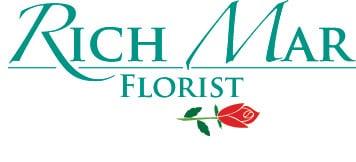




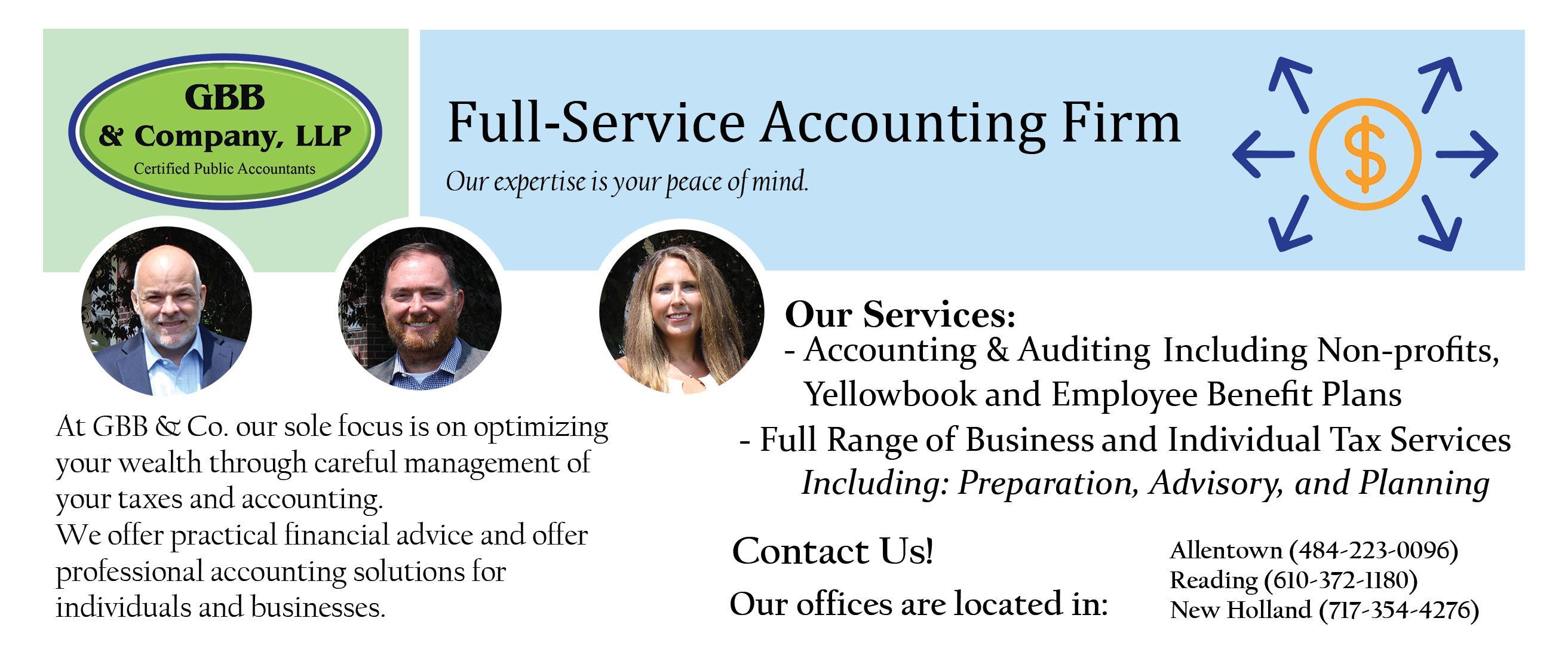

L I F E ' S O C C A S I O N S
We are a full service florist for any event or occasion, large or small Our retail stores offer a wide variety of gift items and fresh flowers If you are planning a wedding or special event, we have an entire showroom of displays to fit your needs Call 610 437 5588 or visit RichMarFlorist com PROUD PARTNER OF
What is Temperature Mapping?
NATHAN ROMAN, DIRECTOR OF VALIDATION, GENESIS AEC
Temperature mapping is a study or analysis performed on controlled temperature chambers (CTC). Equipment such as a freezer, refrigerator, incubator, stability chamber, oven, warehouse, cold room, or autoclave that maintains and controls temperature or humidity and must be temperature mapped. This means that we record the temperature or humidity readings of multiple locations inside of the equipment over a specified period of time.
Storage temperature is very important in maintaining critical quality attributes because drug products or samples are temperature dependent and must be well sustained and controlled.
Current Good Manufacturing Practices (cGMP) are requirements to maintain the products’ safety, quality, and efficacy.
Food and drug products must be stored and transported according to predetermined conditions (for example, 2°C – 8°C). The distribution of products must be transported, handled, and stored in a manner that mitigates the risk of exposure to temperature excursions.
In order to record the temperature or humidity, you will place data loggers in a uniform pattern in all three dimensions of your space – top to bottom, left to right, front to back. You will leave these sensors positioned in their location without being disturbed for a period of time (typically 24 hours for a freezer, refrigerator, or incubator).
That study will provide you a representative view of what’s going on inside of your controlled temperature chamber at that time, and you will evaluate the data to determine whether or not that controlled temperature chamber data conforms with the necessary tolerances or precise conditions you
require for the samples, reagents, or drug product you want to store.

Temperature Mapping is a part of the overall equipment qualification process for companies that are involved in regulated environments and apply Good Manufacturing Practices (GMP) and or Good Laboratory Practices (GLP) to their processes.
The qualification of controlled temperature chambers presents a contradictory challenge to the validation technician: while each chamber qualification follows a relatively simple framework, the nuances of different chambers, manufacturers, temperature set points, alarms, automation systems, refrigeration, and heating systems, and various other peripheral components often require highly individualized methodologies, thus revealing a deceptive level of complexity in the task. Although in the most general terms, a chamber is only required to maintain uniform environmental conditions within given process limits, few owners require so little of their equipment, particularly in highly regulated workspaces.
Even when the control is limited to temperature regulation, the individual nature of each chamber becomes apparent through qualification studies. Temperature stabilization and recovery periods vary widely across different refrigeration and heating systems, which can present a multitude of problems during mandatory temperature uniformity studies. Defrost cycles occurring automatically within a cold chamber can often cause unpredictable temperature spikes outside of the process range, negatively impacting product stability within the chamber. Certain control systems allow for several hours of temperature fluctuation after the chamber is opened before returning to process levels, and others will
tech 46 NETWORK MAGAZINE™ MyNetworkMag.com
overcompensate for large changes in temperature, requiring careful observation before a qualification study can be started. Further, control systems that behave in one way at a specified set point may behave in an entirely separate way if the set point is adjusted, even if no changes are made to the control system itself. With such variation between chambers, it is impossible at the onset of qualification for the technician to predict everything that might occur during temperature mapping. Beyond the mechanical controls of the chamber, the safety features equipped with each unit require further analysis to ensure that, in the event of equipment failure, the chamber will respond properly to the emergency condition and Beyond the mechanical controls of the chamber, the safety features equipped with each unit require further analysis to ensure that, in the event of equipment failure, the chamber will respond properly to the emergency condition and resume operation as normal once the fault is cleared. Building automation systems present a second level of convolution on top of the local alarm system, requiring a full test of all relays to ensure that each signal is transmitted properly to the monitoring software. Even further, when the local and remote alarm systems are independent of one another, any additional temperature probes must be individually calibrated and proven to function as required. Like temperature uniformity testing, there is no hard-and-fast blueprint for the technician to prove the functionality of chamber alarm systems, only guidelines and general knowledge of how to meet certain requirements placed on the chamber. Understanding the diverse nature of controlled temperature chambers, it is my firm belief that the value of our industry technicians lies in their ability to quickly adapt to the individual operation of each chamber, effectively identifying and avoiding roadblocks in the qualification process while meeting both regulations and the highest quality standards.

Our technicians are at their best when they apply their knowledge of chamber qualification procedures to the specifics of the chamber qualification at hand, and not the other way around, ensuring that your qualification package will only be considered complete when it rises to all of your expectations.



Nathan Roman is Director of Validation at Genesis AEC, responsible for Qualification and Validation consulting services. He has over 22 years of experience in commissioning, qualification, and regulatory compliance services. He is an expert in CQV and CGMP, and GLP compliance.
His passion is and always has been 'to help'. He helps people implement proven processes for temperature mapping studies and equipment qualifications (IQ/OQ/ PQ). In the area of temperature mapping, his goal is to better inform and guide those who aim to meet regulatory requirements.
He does this by providing you simple, practical tools for compliant mapping & qualification. Over two decades of experience working hand-in-hand with customers like you.
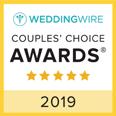

Nathan has supported over 55 companies and 120+ Customers and executed over 2000 equipment qualifications.






To learn more about Temperature Mapping and Validation Services, please contact Nathan Roman directly at nroman@genesisaec.com or Follow Nathan Roman on LinkedIn

Contact Olde Homestead Golf Club or your next Banquet, Holiday Party, Wedding or Golf Tournament! Olde Homestead Golf Club 6598 Route 309, PO Box 222 • New Tripoli, PA 18066 610.298.GOLF (4653) www.OldeHomesteadGolfClub.com Cele ate wi Us! Come
Olde Homestead
GOLF CLUB
The Perfect Meeting Place
 SHANNON ROBINSON, THE CLUB AT TWIN LAKES
SHANNON ROBINSON, THE CLUB AT TWIN LAKES
When the Jaindl family decides to do something, they do it the right way—and the renovations happening at The Club at Twin Lakes are a perfect example of just that.
Purchased by the Jaindl family in December of 2021 and being one of the older clubs in the area, they knew that the club was in dire need of a facelift, says David Ford, General Manager of The Club at Twin Lakes.
There was no time wasted, and construction began in December 2021 on the clubhouse. “The entire exterior has been updated with redwood to give it some depth and a rustic aesthetic,” says Ford. The parking lot, which was formally gravel, has been completely paved with islands added. “When arriving at the club, you get a feeling of grandeur, which was previously absent,” he says.
“The interior clubhouse space has been completely updated— everything has been redone, right down to the studs,” says Ford. New carpets, ceilings, bars, banquet facilities, and even an outdoor patio space have been added. "I'm really excited about the patio—it overlooks the lake and makes for a great private event space or a casual dining space for golfers after their round," he says.
The Club at Twin Lakes has unlimited potential as a place to network and entertain clients. Each banquet room is equipped with state-of-the-art audio/video systems and projectors, and each space can be arranged to suit your needs.
Also on site is the new Wild Turkey restaurant and bar, which has an anticipated opening date of October 1st and makes for
another great space to talk shop or simply grab a bite to eat after a round of golf.
With the clubhouse in the final stages of renovation, the Jaindls have set their sights on the golf course next. “Cart paths have been added to all but nine holes, and they are in the stages of creating a master plan to update the bunkers, fairways, and greens," says Ford.
The Club at Twin Lakes is centrally located, making it an ideal meeting place. "We are very easy to get to, and offer a level of service that is unparalleled," says Ford. "Whether you want to entertain clients with a round of golf or host a gathering, we can accommodate almost any request.”
When the Jaindl family purchased the club, it was important to them to keep it as a public space. “It’s literally in their backyard—it backs onto their property and is an extension of their farm and their family legacy,” says Ford. "The family has a long history of giving to their community, and this is no exception."
With its easy access, completely updated aesthetic, its new dining options, and a level of service you would expect at a place of this caliber, The Club at Twin Lakes is the perfect meeting and networking venue.
Ford says, “The golf club has a bright future ahead of it, with plans to continue to improve the facility and the service level, which guarantees this will be a community hub for years to come.”
48 NETWORK MAGAZINE™ MyNetworkMag.com
S



H
T h e C l u b a t T w i n L a k e s o f f e r s a r u r a l s e t t i n g j u s t m i n u t e s f r o m A l l e n t o w n , B e t h l e h e m , a n d E a s t o n , n e s t l e d i n N o r t h W e s t e r n L e h i g h C o u n t y . O u r i n t i m a t e s e t t i n g p r o v i d e s m a n y p h o t o g r a p h i c o p p o r t u n i t i e s , i n c l u d i n g t w o c e r e m o n y s i t e s , m a g n i f i c e n t v i e w s o f o u r 1 8 t h h o l e g o l f c o u r s e , h i s t o r i c b a r n , a n d p a n o r a m i c v i e w s o f o u r l a k e s .
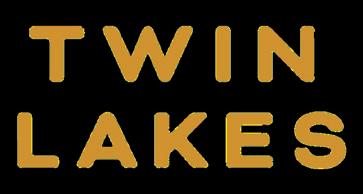





F O R E V E R
T A R T S
E R E
B O O K Y O U R D A T E T O D A Y T H E C L U B A T T W I N L A K E S . C O M | ( 6 1 0 ) 3 9 5 3 3 6 9
Cigar Review

 STEVE ROWBOTTOM, CIGAR AFICIONADO CIGARS INTERNATIONAL
STEVE ROWBOTTOM, CIGAR AFICIONADO CIGARS INTERNATIONAL
AVO XO Maestoso Dominican Republic 7.0” x 48 Mellow 94-Rated
For nearly 20 years, I’ve been a huge fan of AVO XO. In fact, I’ve often suggested this cigar to those seeking a smooth cigar that’s creamy throughout. This Dominican handmade employs a gorgeous Ecuador Connecticut wrapper and vintage Dominican long-fillers to generate a wealth of rich and creamy flavors inside a mellow profile. Creamy tobacco. Sweet cedar. Unique fruit notes. All backed by a dash of white pepper that lingers on the finish. I still recommend it today.

Caldwell Collection – E.S. Midnight Express Toro
Mi Querida Triqui Traca No. 552
Dominican Republic 6.0” x 52 Medium-Full 93-Rated
If you haven’t sought a cigar with an Arapiraca wrapper, the Midnight Express is a great place to start. This maduro wrapper comes from Brazil, and lends a toasty, ‘well-done’ element to a cigar, similar to the tasty gristle on the fatty edge of a steak. Caldwell loaded this wrapper with Dominican Criollo and Corojo long-fillers, combined with Nicaraguan leaves inside a Habano binder. The result is bold yet balanced layers of flavor. I pick up leather, toast and coffee bean throughout the burn, with black pepper and ‘gristle’ on the finish.
Guardian of the Farm Cerberus Lonsdale
Nicaragua 5.0” x 52 Full 93-Rated
Some full-bodied cigars smack you in the mouth like the action end of a shotgun. Some fill your gut like a big meal. The Triqui Traca sits in your gut, leaving enough space for a nice bourbon pairing. Aged ligeros from the Dominican and Nicaragua were chosen for this blend, which are capped by an oily Connecticut Broadleaf wrapper. The bouquet is bold yet smooth, with a dense earthiness met with sweet tobacco notes and bitter chocolate undertones. It’s full throughout and fills the palate with heavy smoke.
Warped La Hacienda Gran Robusto


Nicaragua 6.0” x 44
Medium-Full 92-Rated
I’m not one to pick up a Lonsdale often, but this size performs extremely well when a choice wrapper is in play. Cerberus utilizes a unique Corojo 2012 wrapper grown in Nicaragua, overtop allNicaraguan tobaccos. The wrapper is chewy, offering ample hearty flavors including nuts and hickory. The tobaccos within are bold, but smooth things out nicely allowing a touch of coffee to shine on the finish. The profile starts medium and grows more full during the burn without getting too hot given its size. Overall, a well-executed Lonsdale.
Nicaragua 5.5” x 52 Medium 92-Rated
No-nonsense and complex. That’s Warped La Hacienda in my mind. This gritty-looking cigar features all-Nicaraguan tobaccos and delivers a middle of the road strength complemented by hints of rich tobacco and cashew. Every few puffs I get notes of coffee bean, while the finish is filled with toast and leather. The cigar burns cool and slow, and represents – in my mind – a solid and reliable Nicaraguan profile. Tasty and balanced from start to finish.

50 NETWORK MAGAZINE™ MyNetworkMag.com
Hindle

“I WANT AN AD THAT’S TOTALLY STUPID. LET’S GET THEIR ATTENTION.” –Bill
Jaindl: A Family History of Entrepreneurship
 ZACHARY J. JAINDL, PRESIDENT / CHIEF OPERATING OFFICER JAINDL ENTERPRISES
ZACHARY J. JAINDL, PRESIDENT / CHIEF OPERATING OFFICER JAINDL ENTERPRISES
In 1898, John J. Jaindl immigrated to Allentown’s First Ward from Poppendorf, Austria, to pursue the American Dream. John began his family business with the Jaindl Shoe Manufacturing Company: the small business employed fifty Allentownians and produced more than 600 pairs of shoes daily.
The family entrepreneurial spirit later passed to John J. Jaindl’s son, John L. Jaindl. John L. moved his family to the city’s West End and founded a small restaurant called the Stone Tavern. In 1933, John L. and his son, Fred, began raising turkey sand Muscovy ducks to serve at the restaurant. The father-son team committed themselves to their trade and sought to raise the best turkeys in the country. In 1945 Fred joined the family business full-time, and the Stone Tavern Turkey Farm was renamed Jaindl Turkey Farms. The Jaindl turkey won the “Grand Champion” title in 1954 and has been served at the White House for Thanksgiving since the Eisenhower Administration.
In 1997, Fred carried the traditions from previous generations and founded American Bank, Inc. with his son, Mark. Under the leadership of Fred as Chairman and Mark as President and Chief Executive Officer, the two men leveraged the new possibilities of the internet to secure customers in all fifty states and countries across the globe.
History repeated in 2011 when Mark and his son, Zachary, leveraged decades of real estate development experience and entrepreneurial values to establish a portfolio of vertically integrated companies. The first addition to the family of companies, Jaindl Properties, was founded to oversee all commercial construction. In 2012, The Waterfront Development Company launched to develop a stunning twenty-nine-acre campus along the Lehigh River in Allentown. At full build-out, the $425 million development will offer more than 650,000 square feet of office space, 125,000 square feet of restaurant opportunities, 425 luxury apartments, and a mix of outdoor recreational amenities.
In 2014, Jaindl Properties announced plans to develop the historic Lehigh Valley Trust Building into the luxury event venue, Vault 634. The 17,000-square-foot boutique event space was designed to marry the opulence of the early 1900s with state-of-the-art modern amenities to accommodate weddings, corporate events, and personal celebrations. In 2015, Jaindl Enterprises added SteelRock Property Management to its portfolio. The full-service property management firm ensures all company real estate is maintained to the highest standard to guarantee clients and tenants the best product in the market.
The Jaindl Family has spanned various industries across its six generations of entrepreneurial ventures, but one common thread unites all its endeavors: the Lehigh Valley. John J. Jaindl first immigrated to the region in hopes of building a better life for his family, and what he found was an area emanating enormous potential. The chain of father-son partners realized that the region had been good to their family and sought new ways to introduce social and economic progress through development and innovation.
Today, more than ever, the Lehigh Valley continues to be a prime location for small and large businesses alike. With close proximities to New York City and Philadelphia, prime shipping and distribution routes, and a mix of city, suburban, and rural lifestyle amenities that accommodate any individual’s preferences. Thriving downtowns and special tax incentives provide incredible opportunities for companies inside and outside the region while creating new chances to attract rising talent.
Jaindl Enterprises and its team are incredibly proud of the Lehigh Valley and the city it has called home for more than 120 years and look forward to contributing to its future while honoring and preserving its past.
52 NETWORK MAGAZINE™ MyNetworkMag.com











































 MELISSA DITTMANN TRACEY FOR REALTOR® MAGAZINE, AND JUSTIN POREMBO, CHIEF EXECUTIVE OFFICER, GREATER LEHIGH VALLEY REALTORS®
MELISSA DITTMANN TRACEY FOR REALTOR® MAGAZINE, AND JUSTIN POREMBO, CHIEF EXECUTIVE OFFICER, GREATER LEHIGH VALLEY REALTORS®

 THOMAS J. JORDAN IV, MARKET PRESIDENT, CENTRAL PA, UNIVEST BANK AND TRUST CO.
THOMAS J. JORDAN IV, MARKET PRESIDENT, CENTRAL PA, UNIVEST BANK AND TRUST CO.



 STEPHANIE KOSTELNICK, OWNER/PRESIDENT
BUSINESS SUPPORT SERVICES, INC.
STEPHANIE KOSTELNICK, OWNER/PRESIDENT
BUSINESS SUPPORT SERVICES, INC.






 MIKE LICHTENBERGER, GROUP EXECUTIVE, ENTRUST HEALTHCARE PAYMENTS
MIKE LICHTENBERGER, GROUP EXECUTIVE, ENTRUST HEALTHCARE PAYMENTS










































 SHANNON ROBINSON, THE CLUB AT TWIN LAKES
SHANNON ROBINSON, THE CLUB AT TWIN LAKES










 STEVE ROWBOTTOM, CIGAR AFICIONADO CIGARS INTERNATIONAL
STEVE ROWBOTTOM, CIGAR AFICIONADO CIGARS INTERNATIONAL





 ZACHARY J. JAINDL, PRESIDENT / CHIEF OPERATING OFFICER JAINDL ENTERPRISES
ZACHARY J. JAINDL, PRESIDENT / CHIEF OPERATING OFFICER JAINDL ENTERPRISES

























